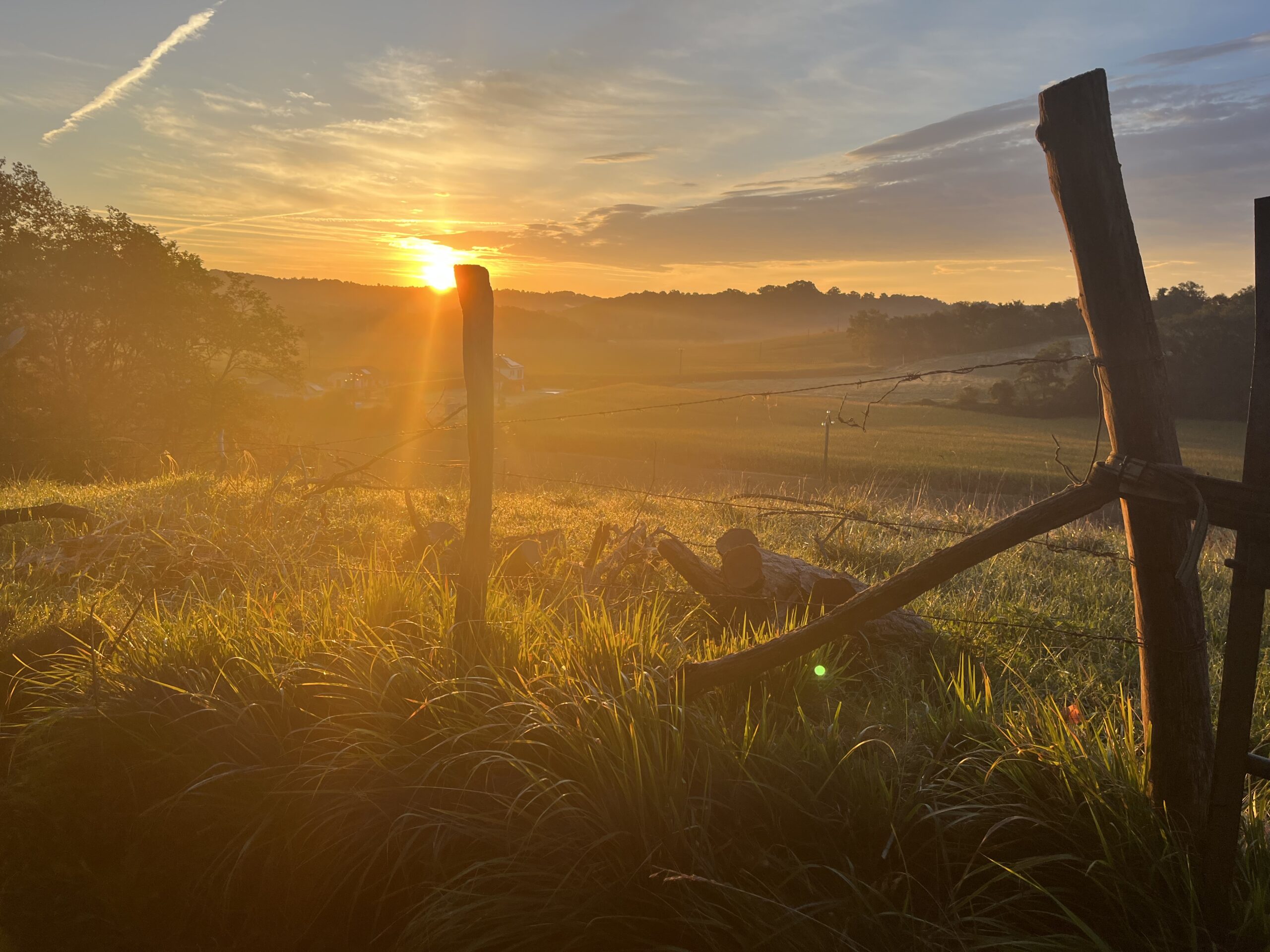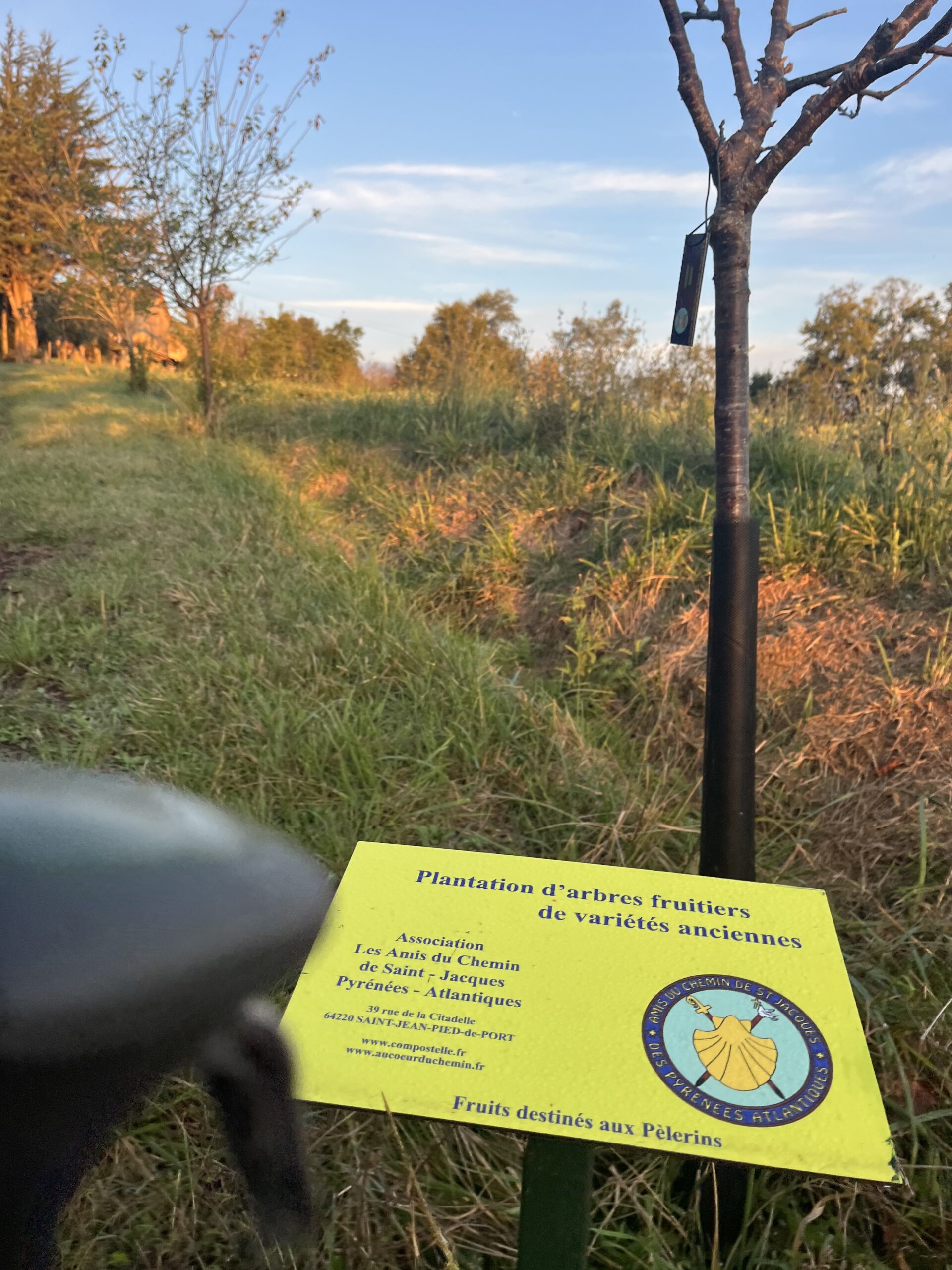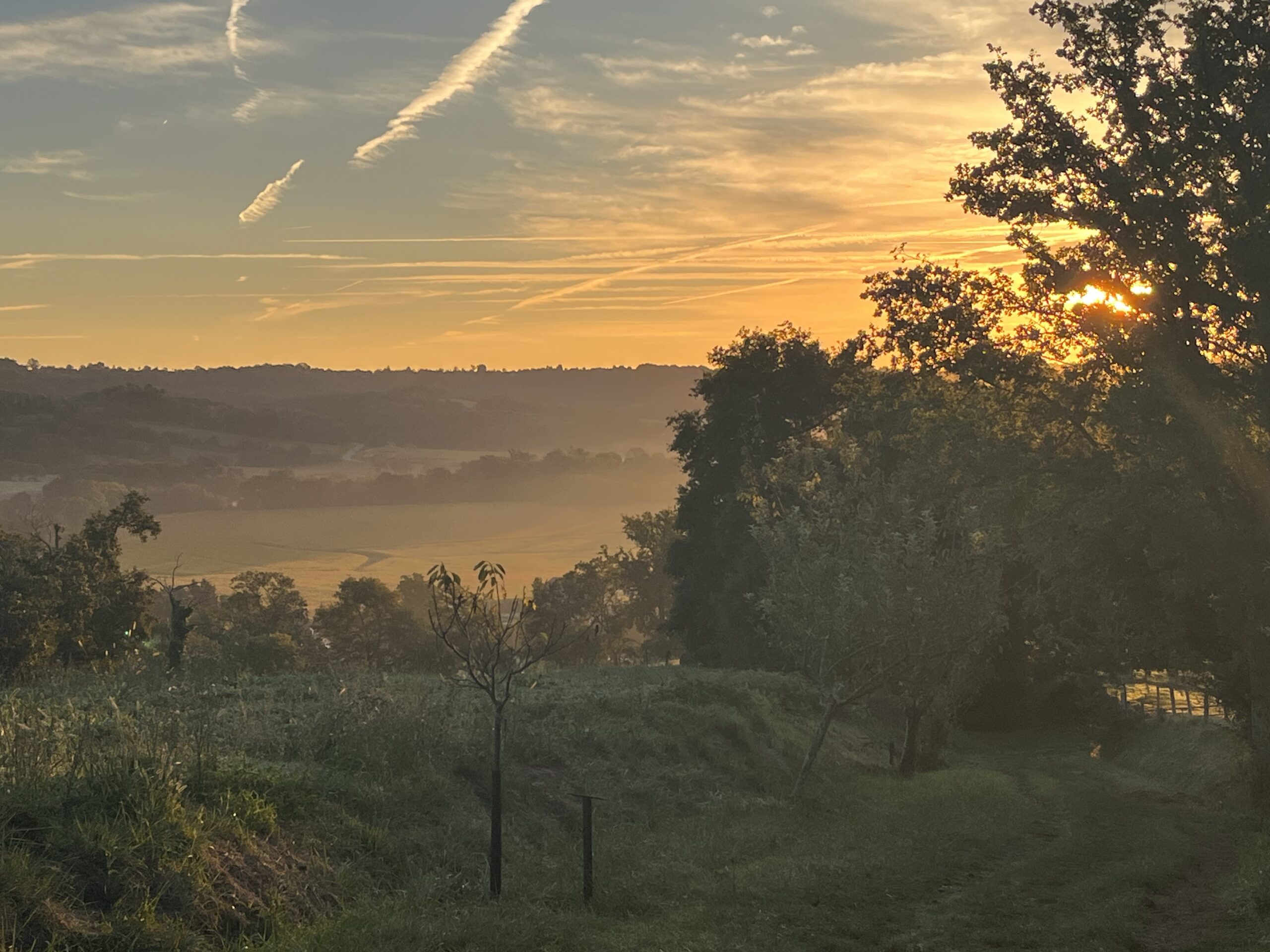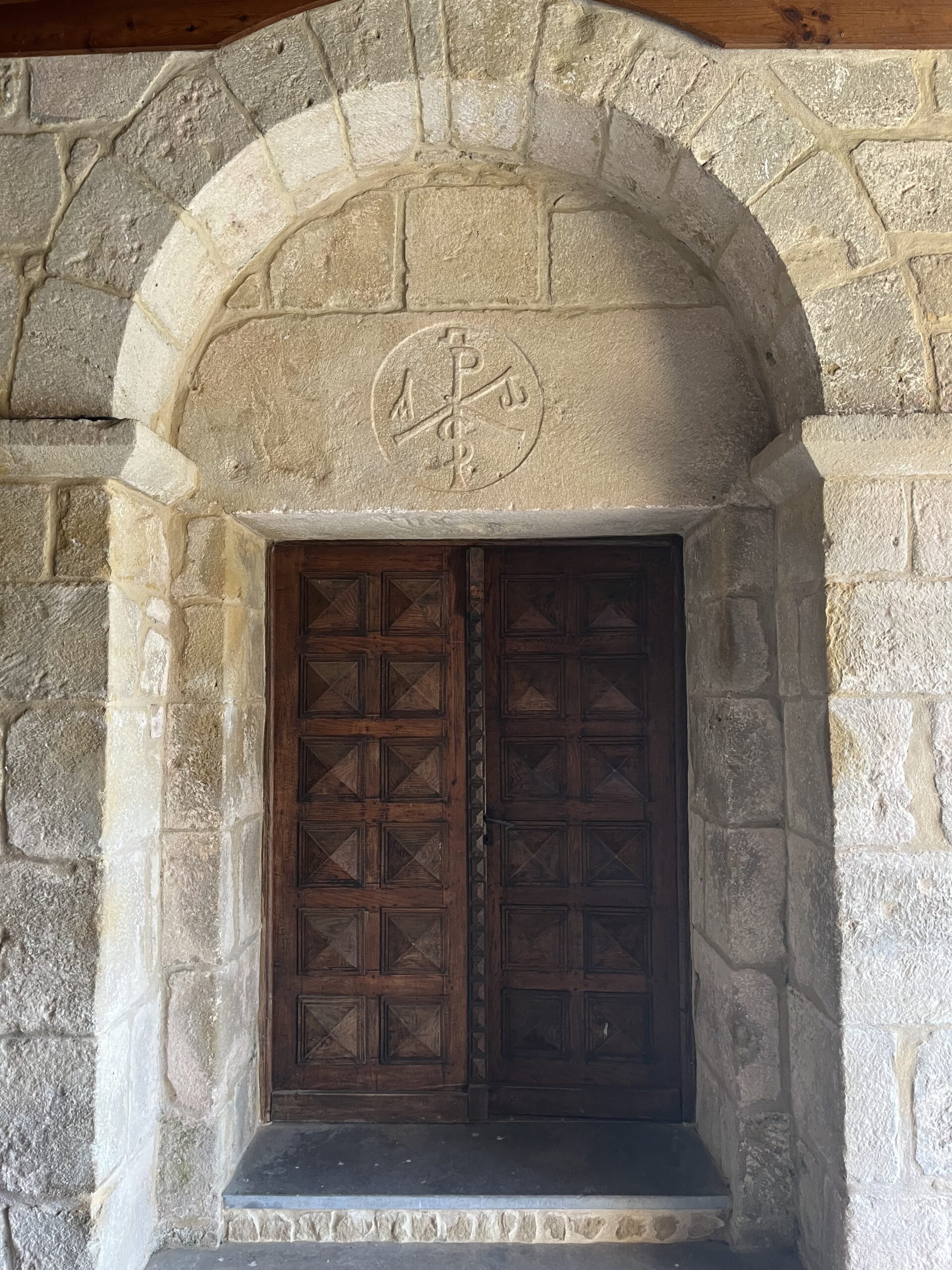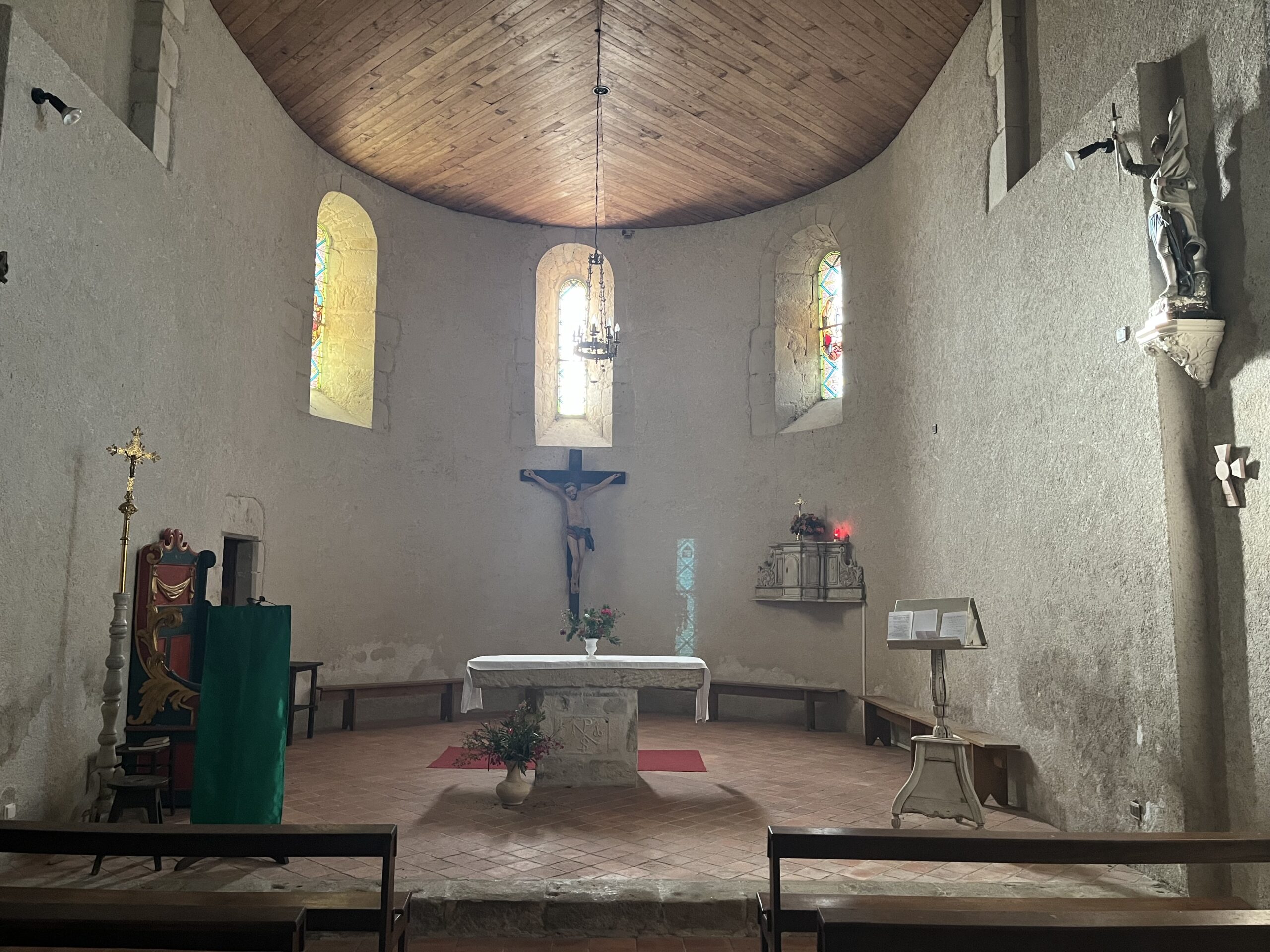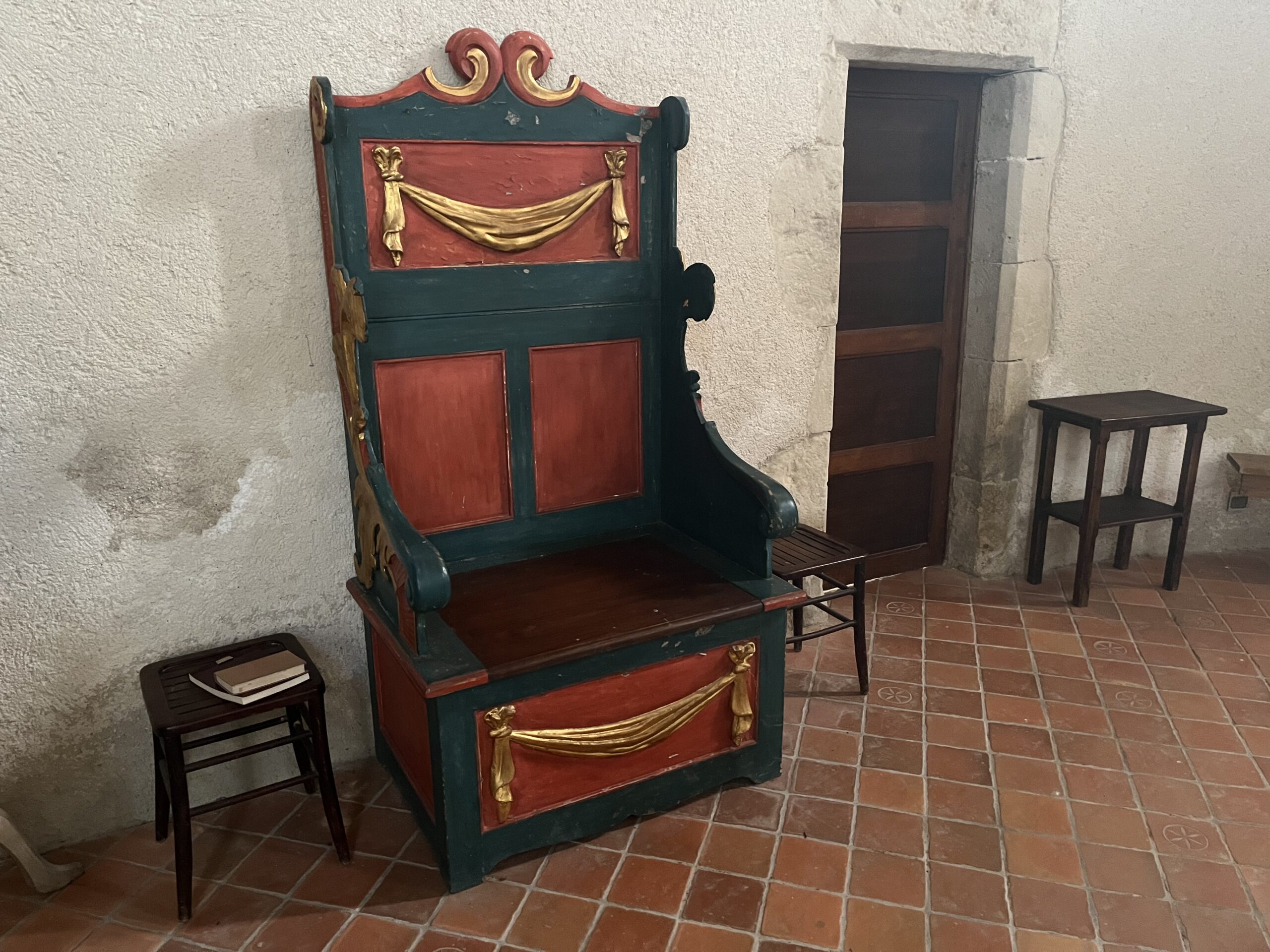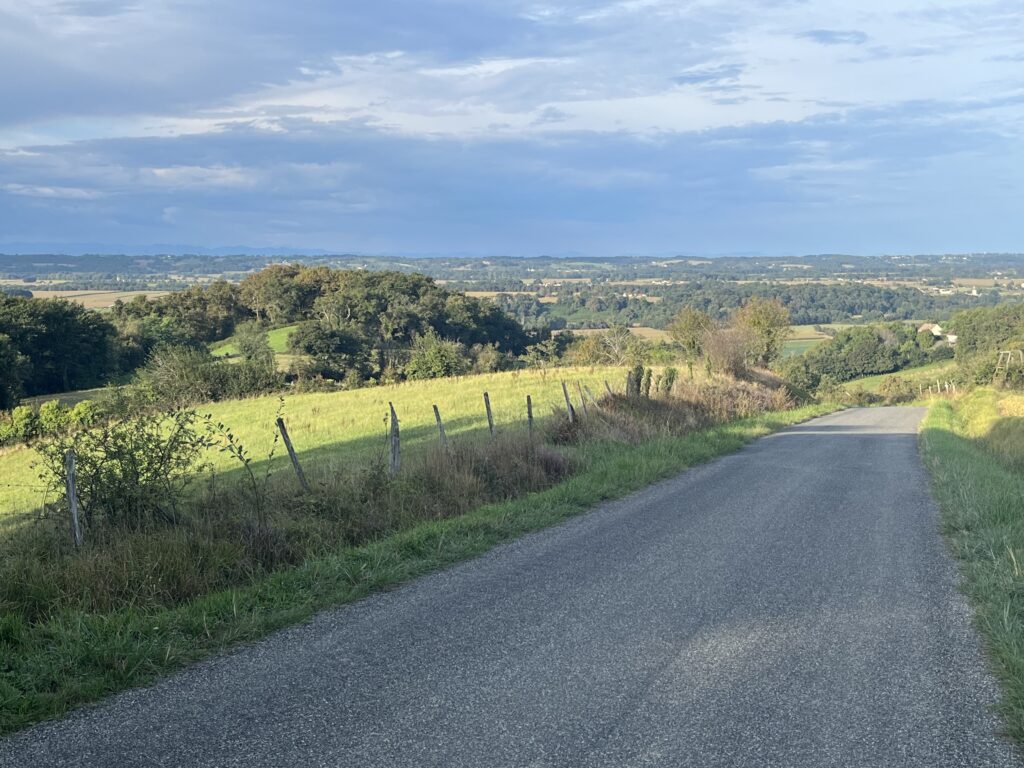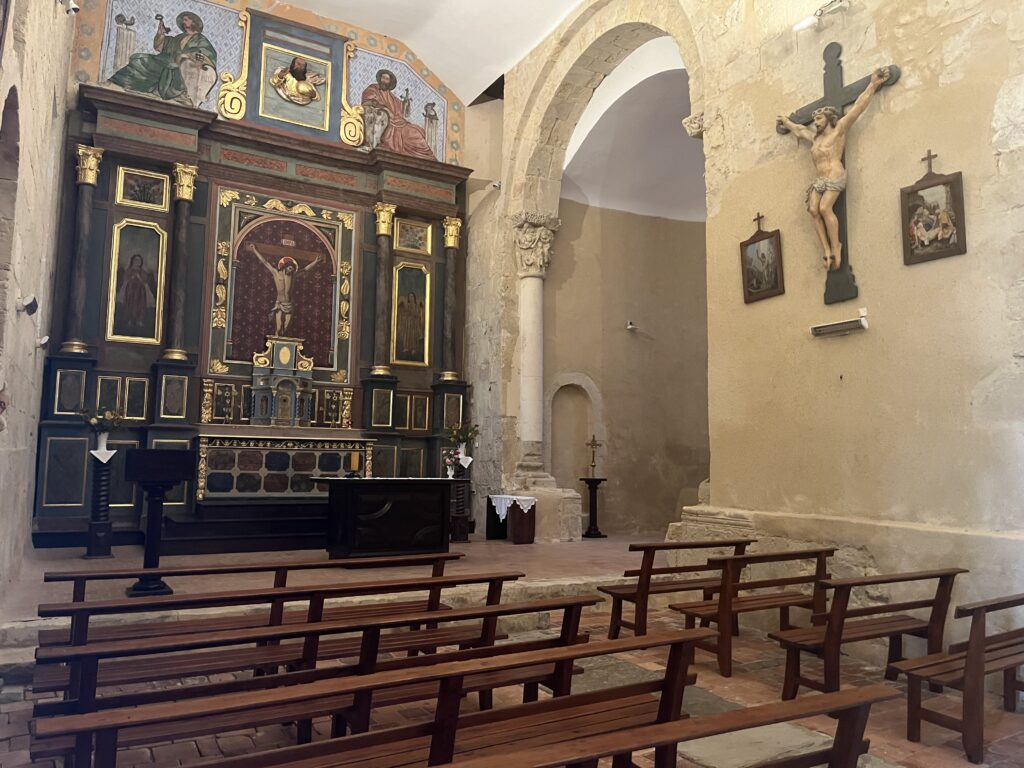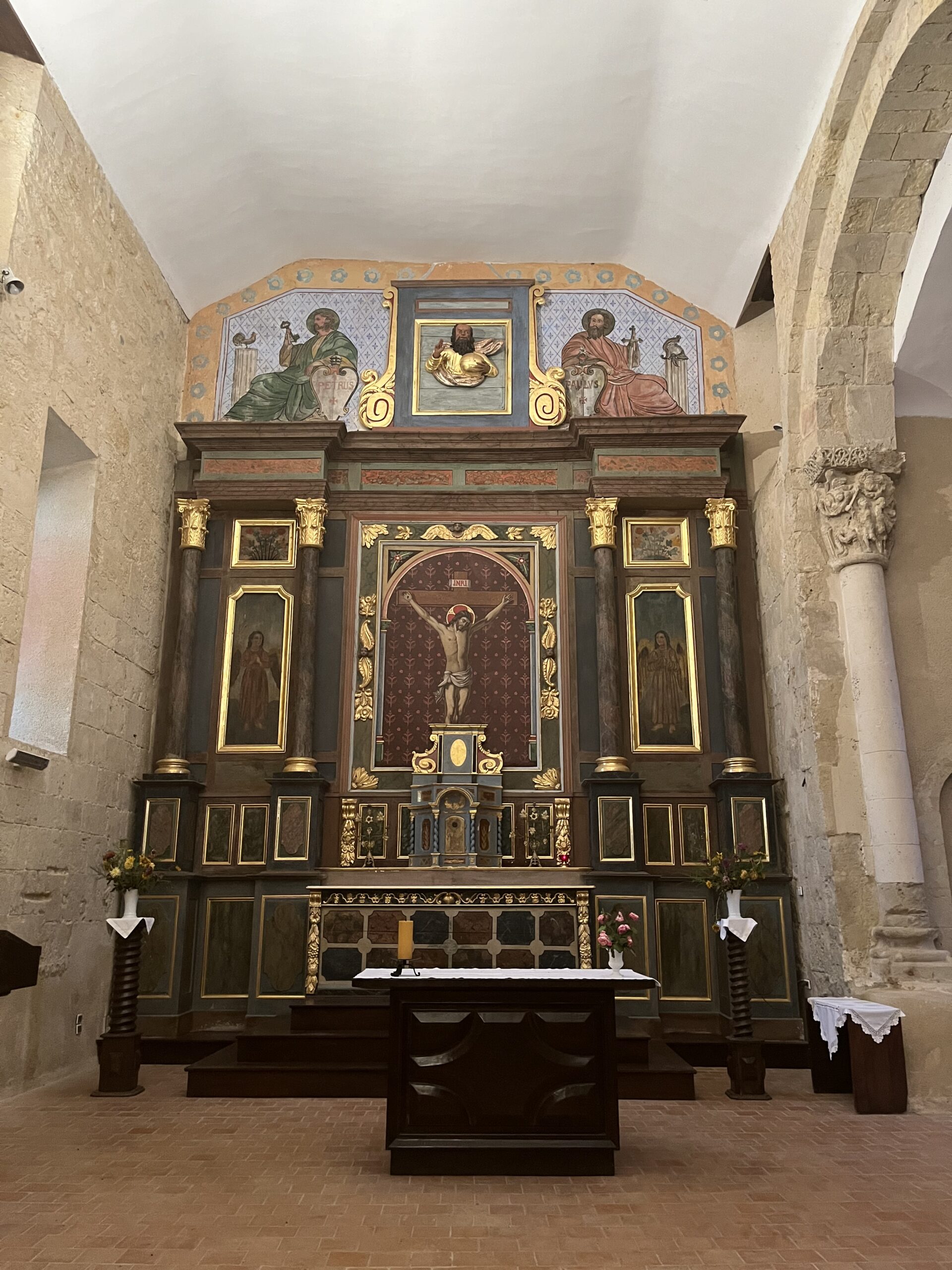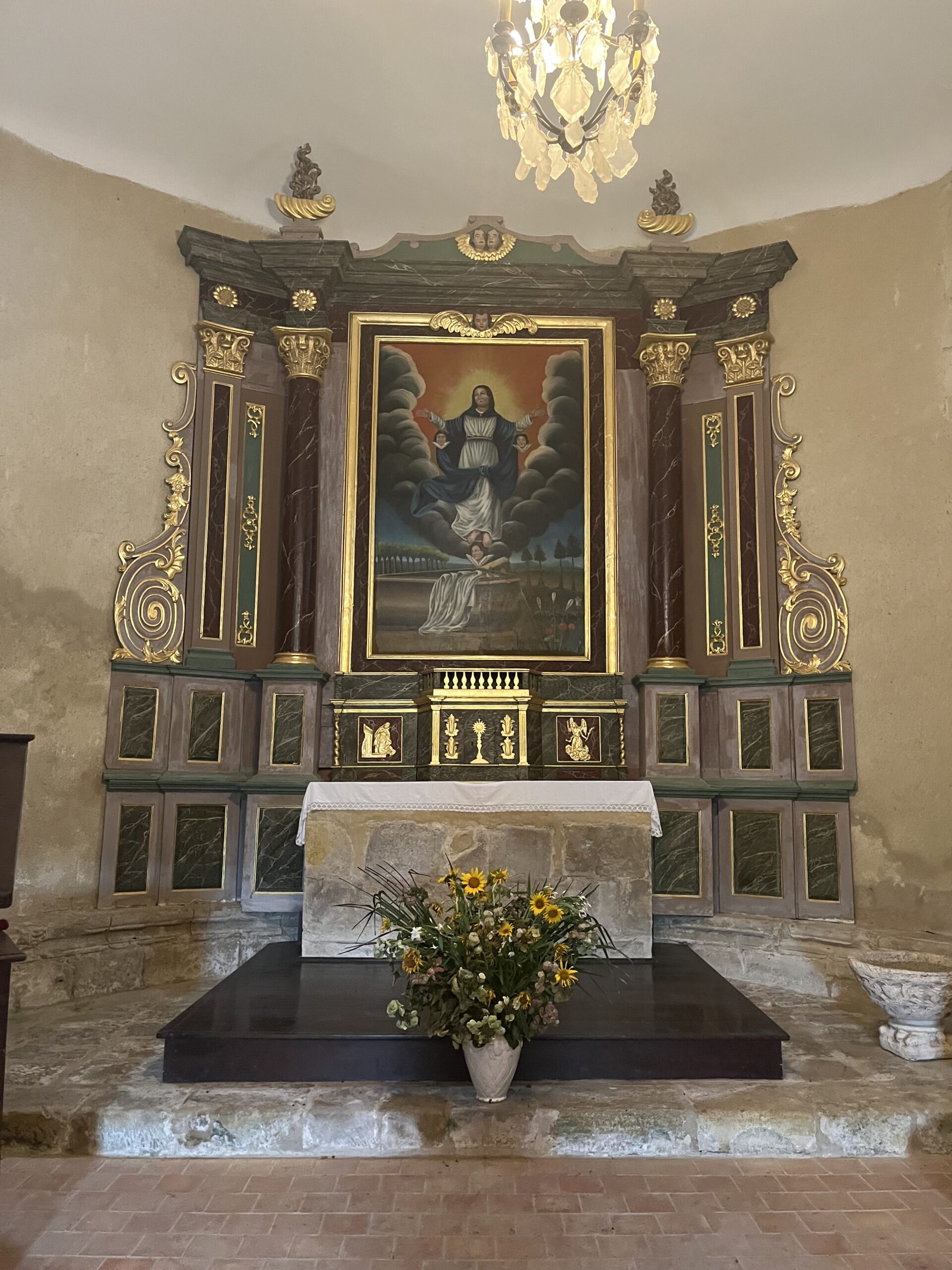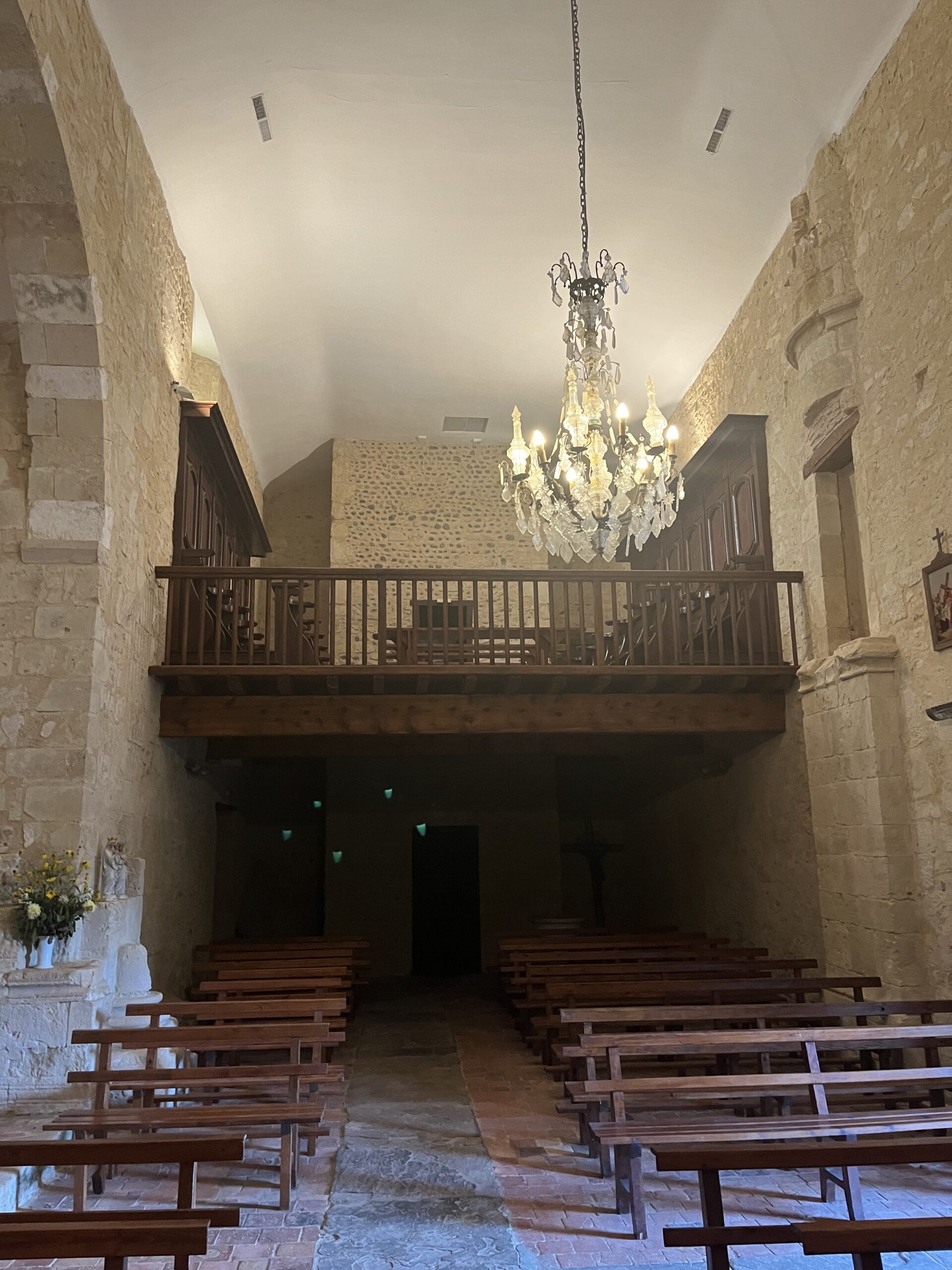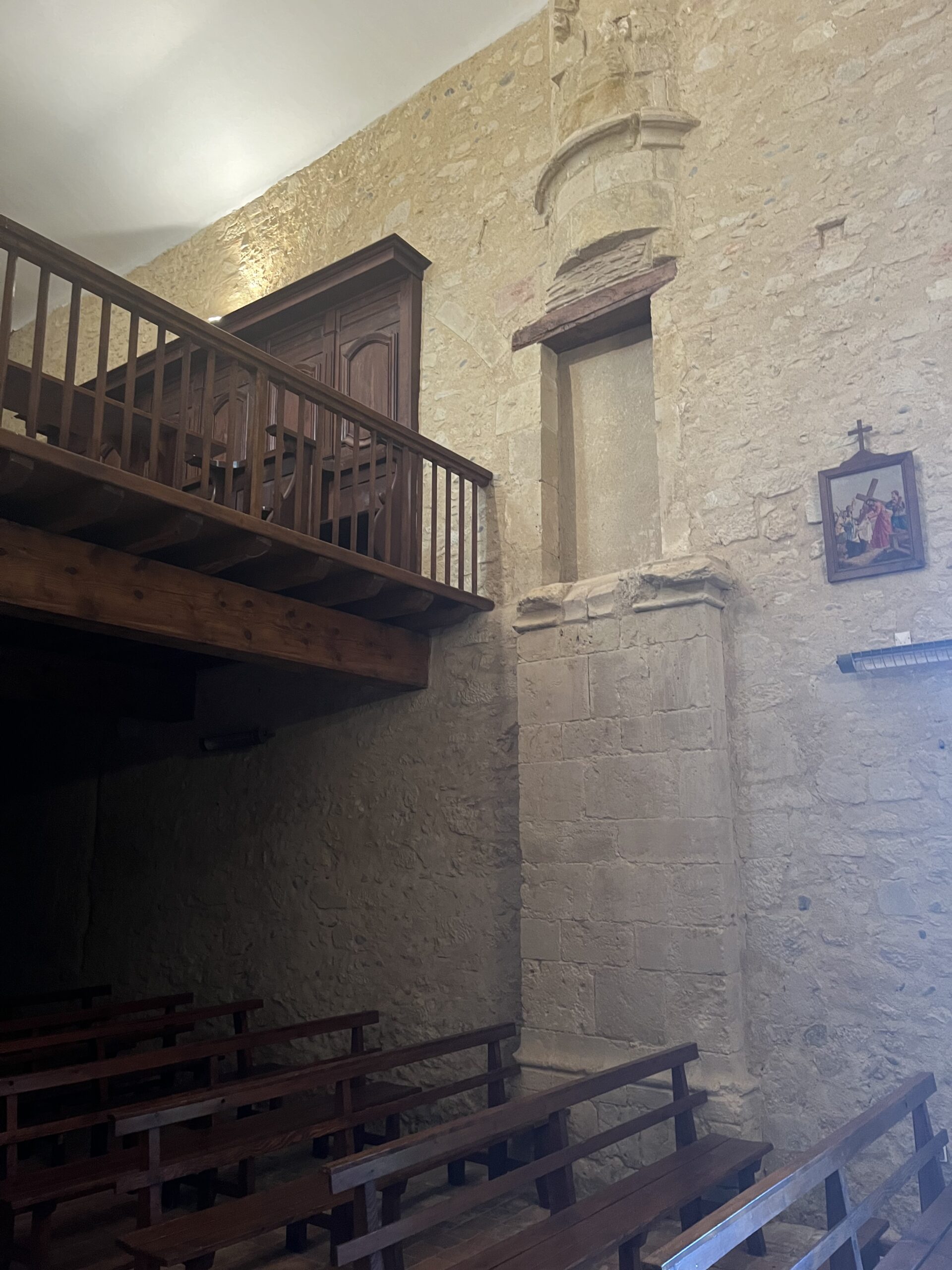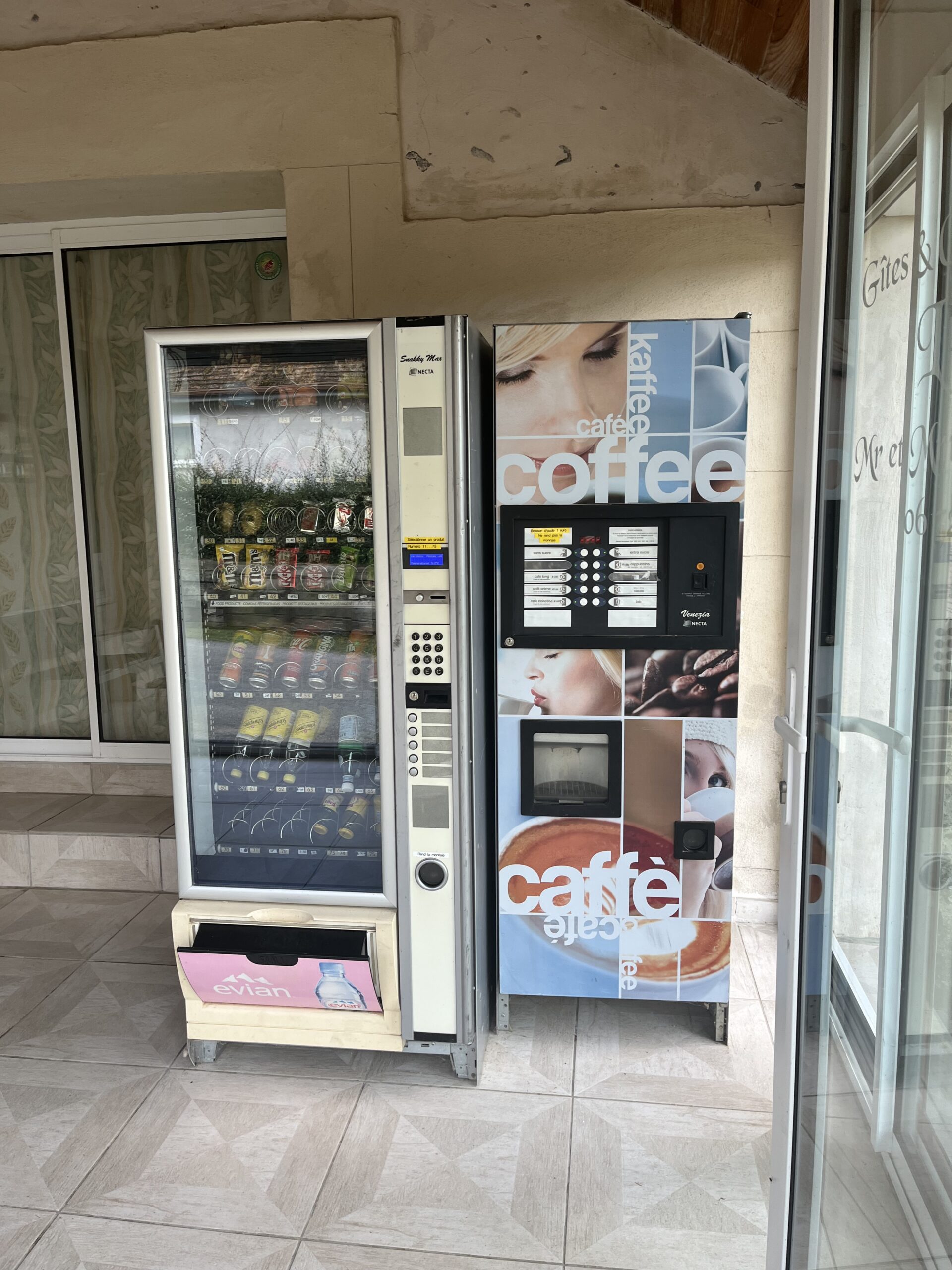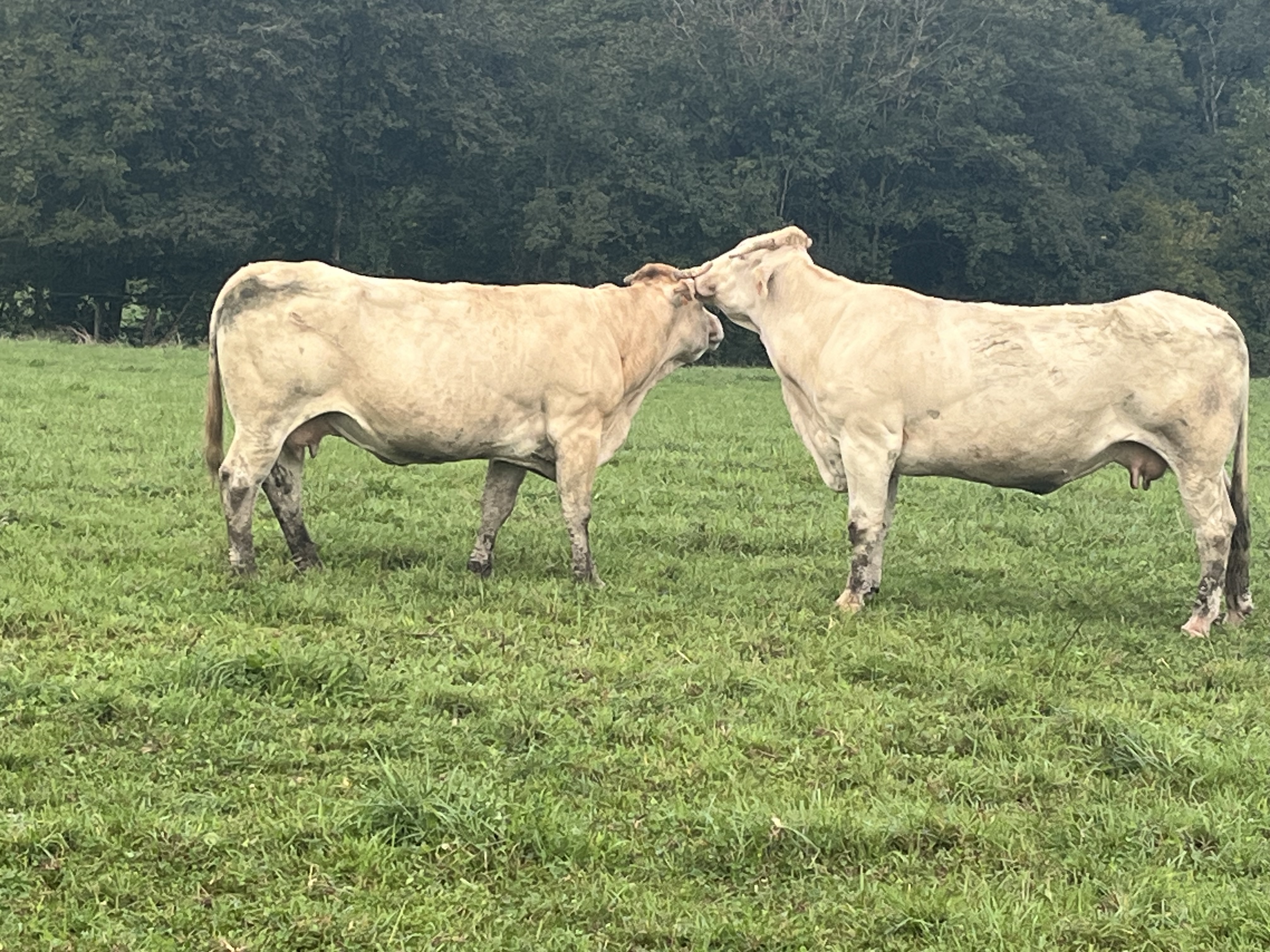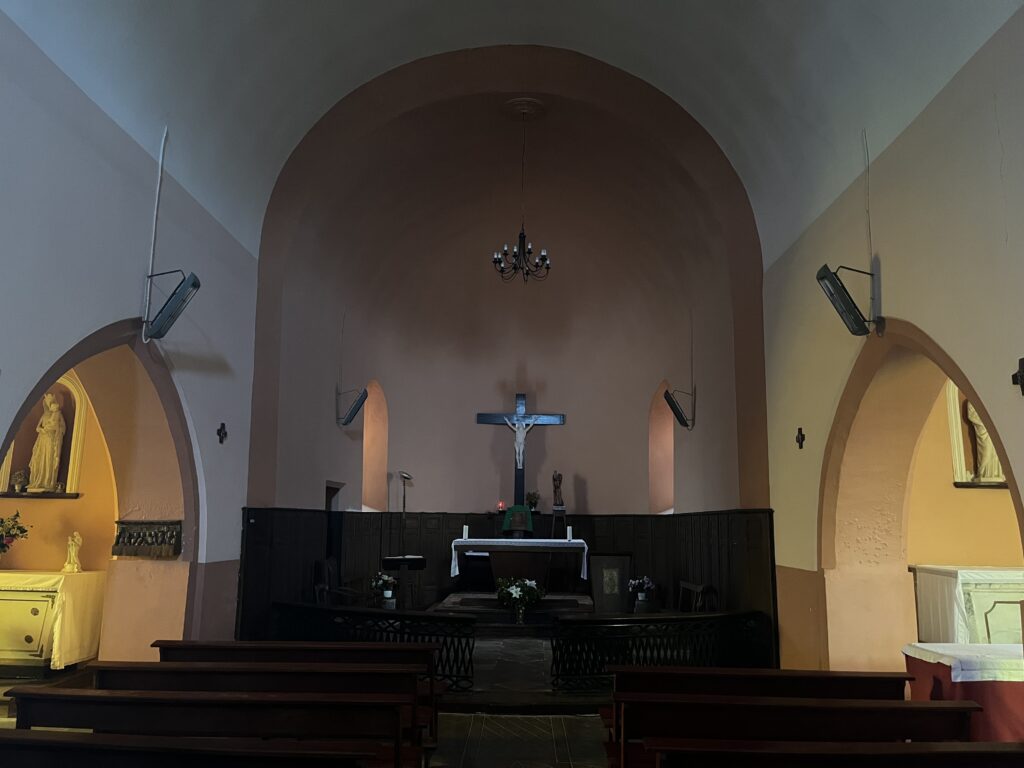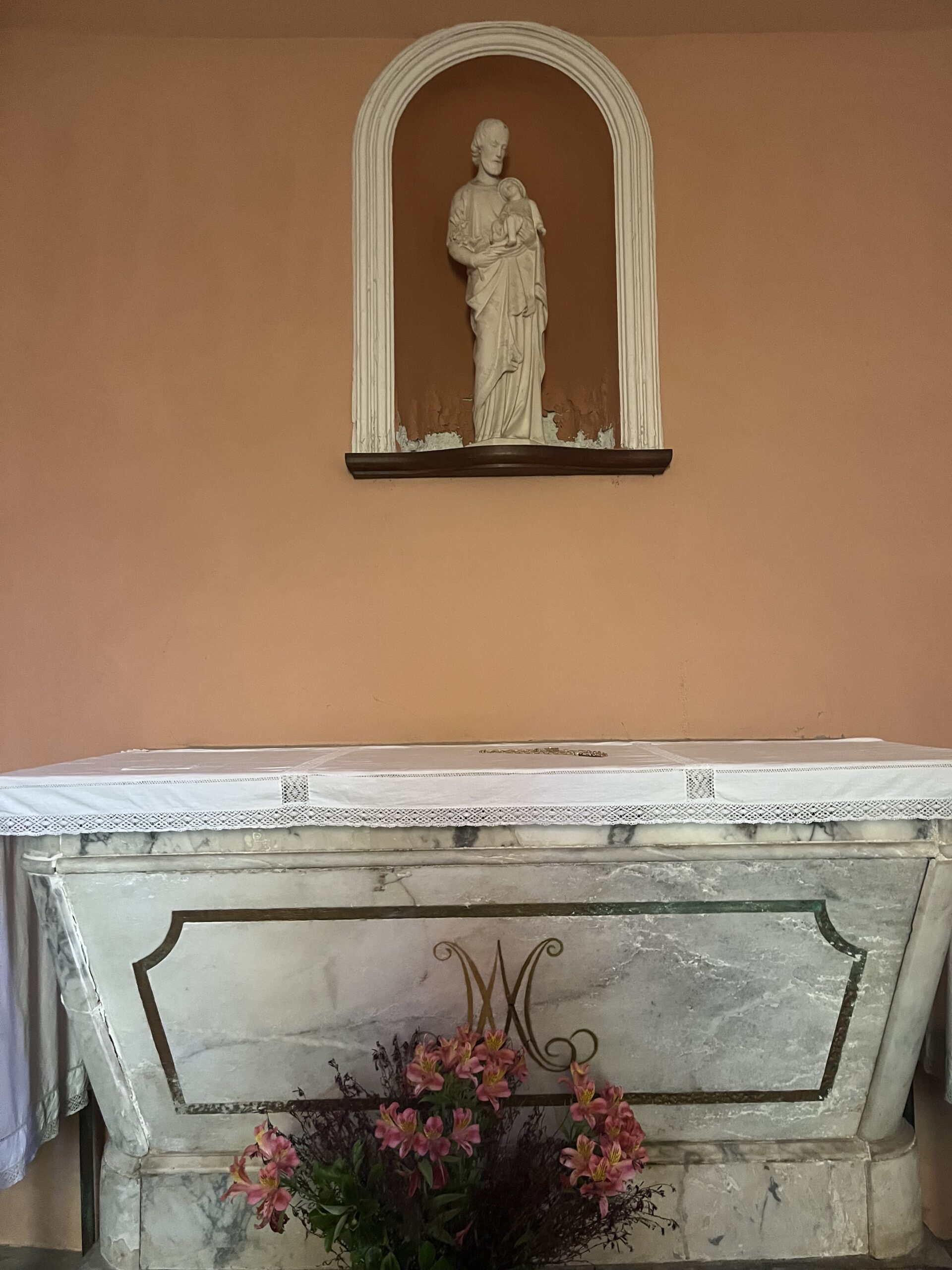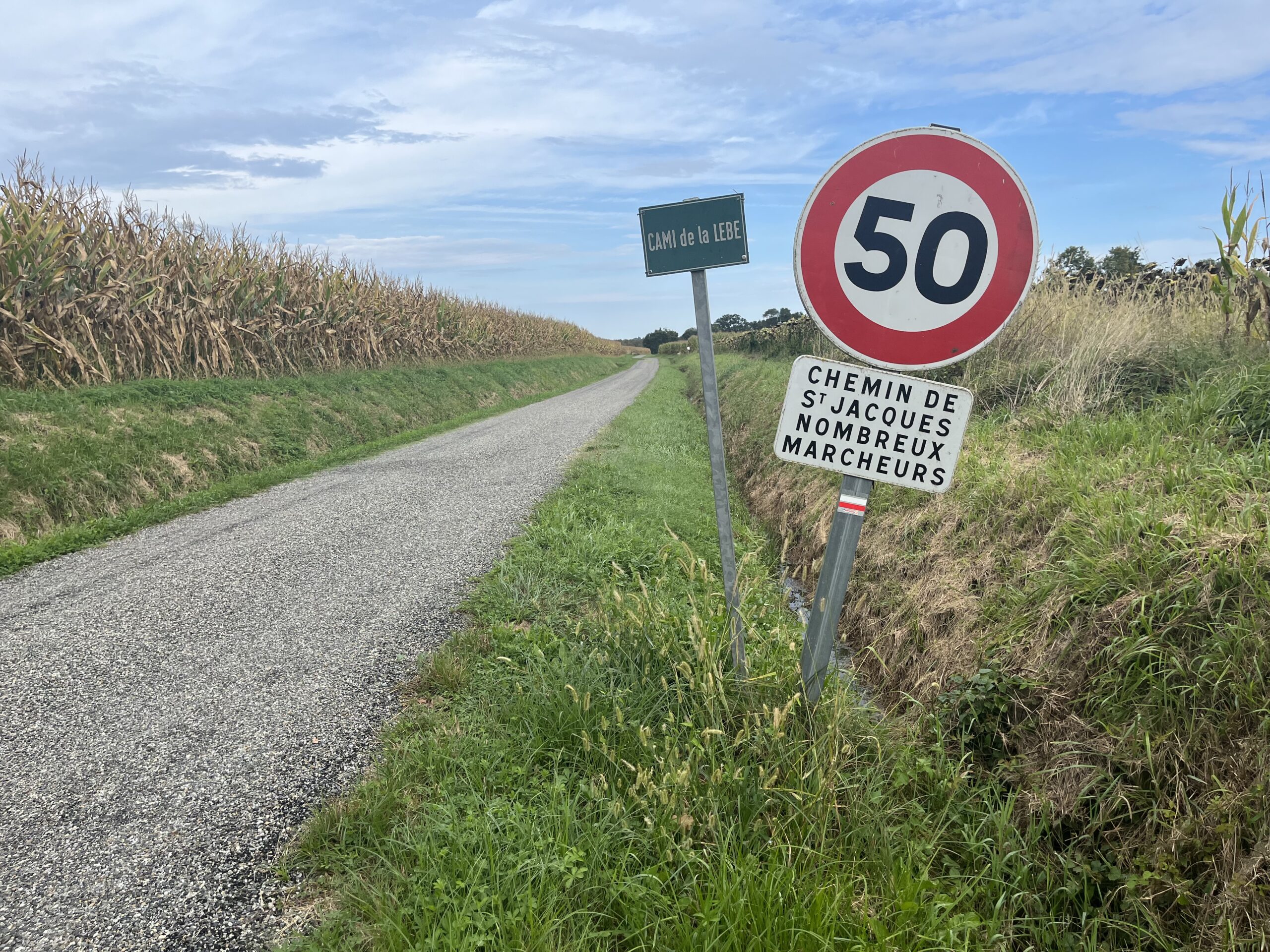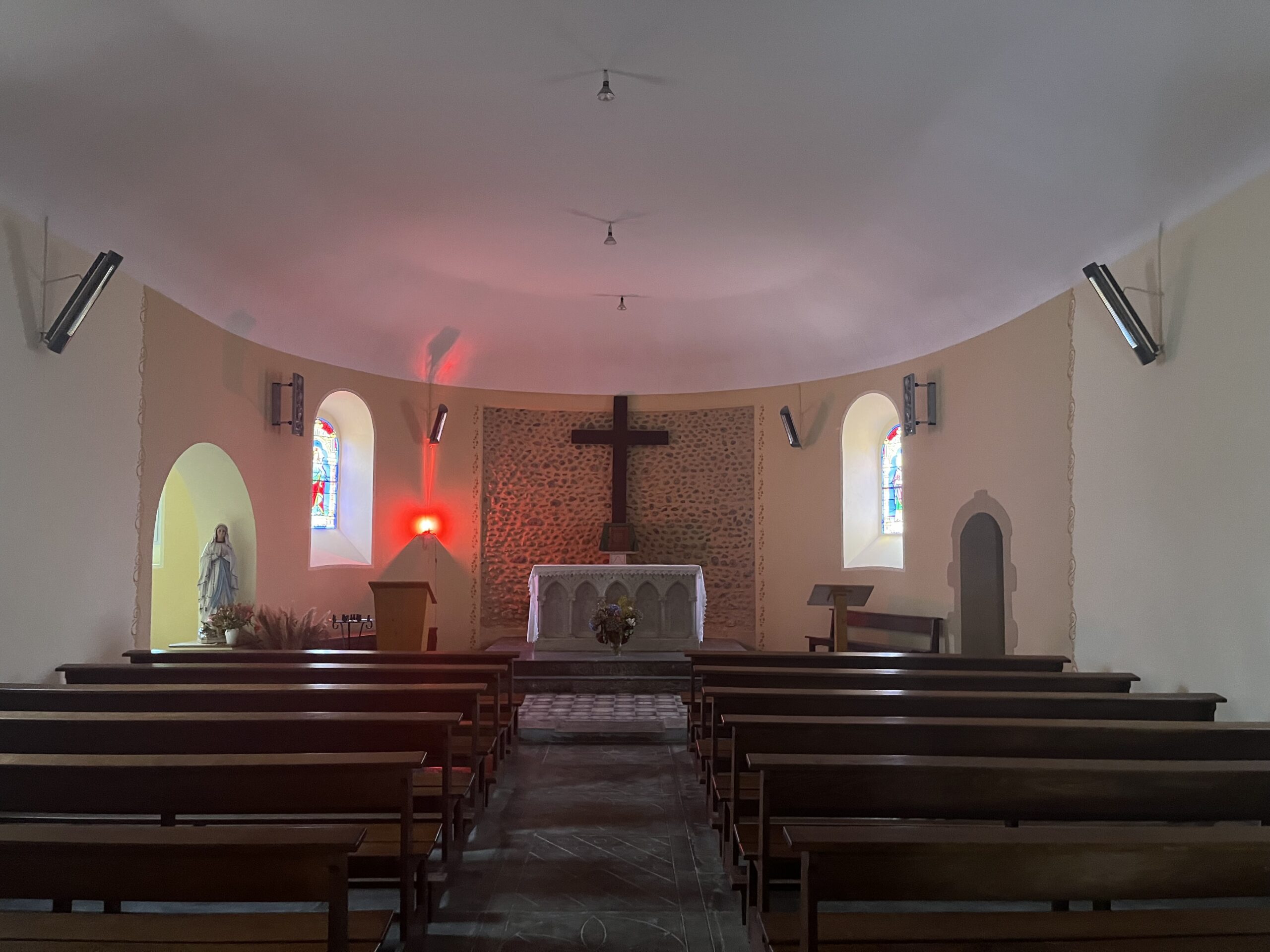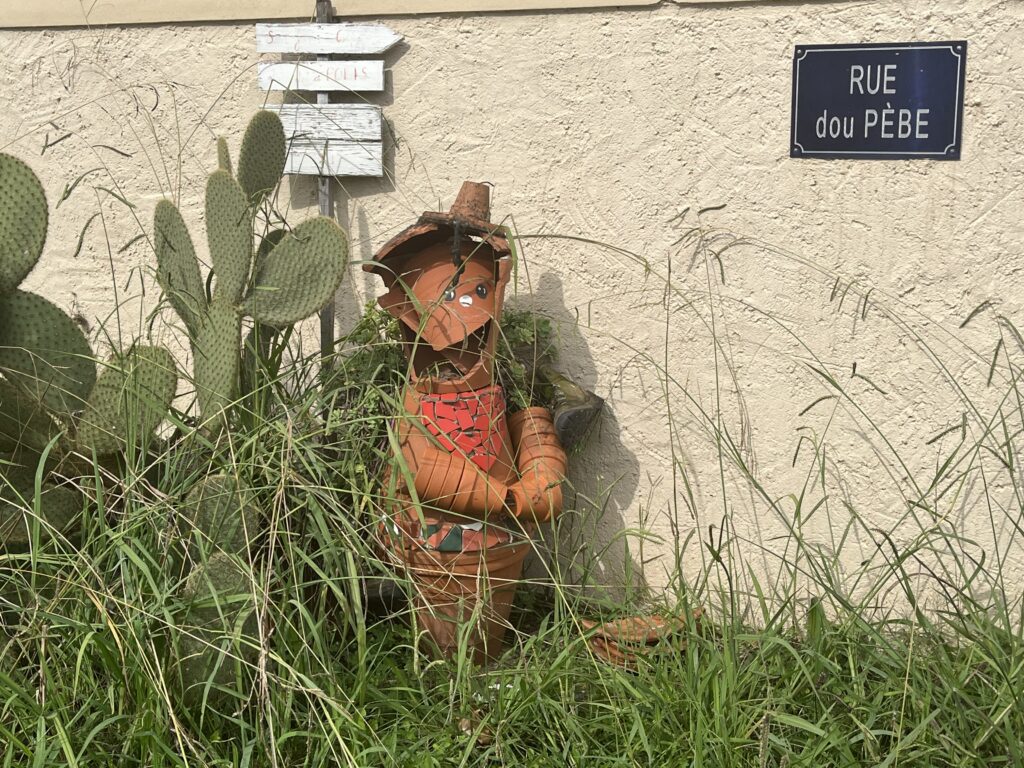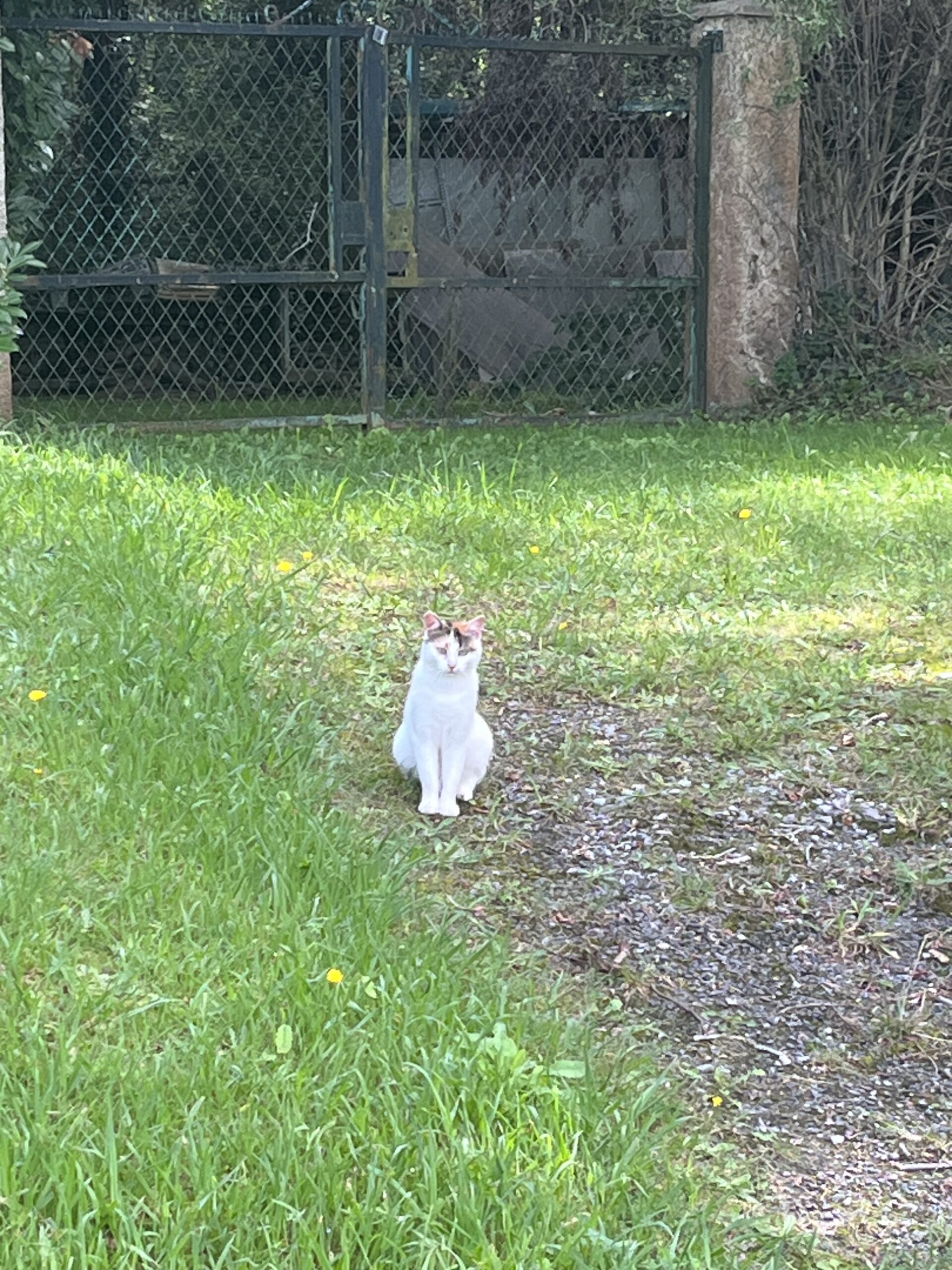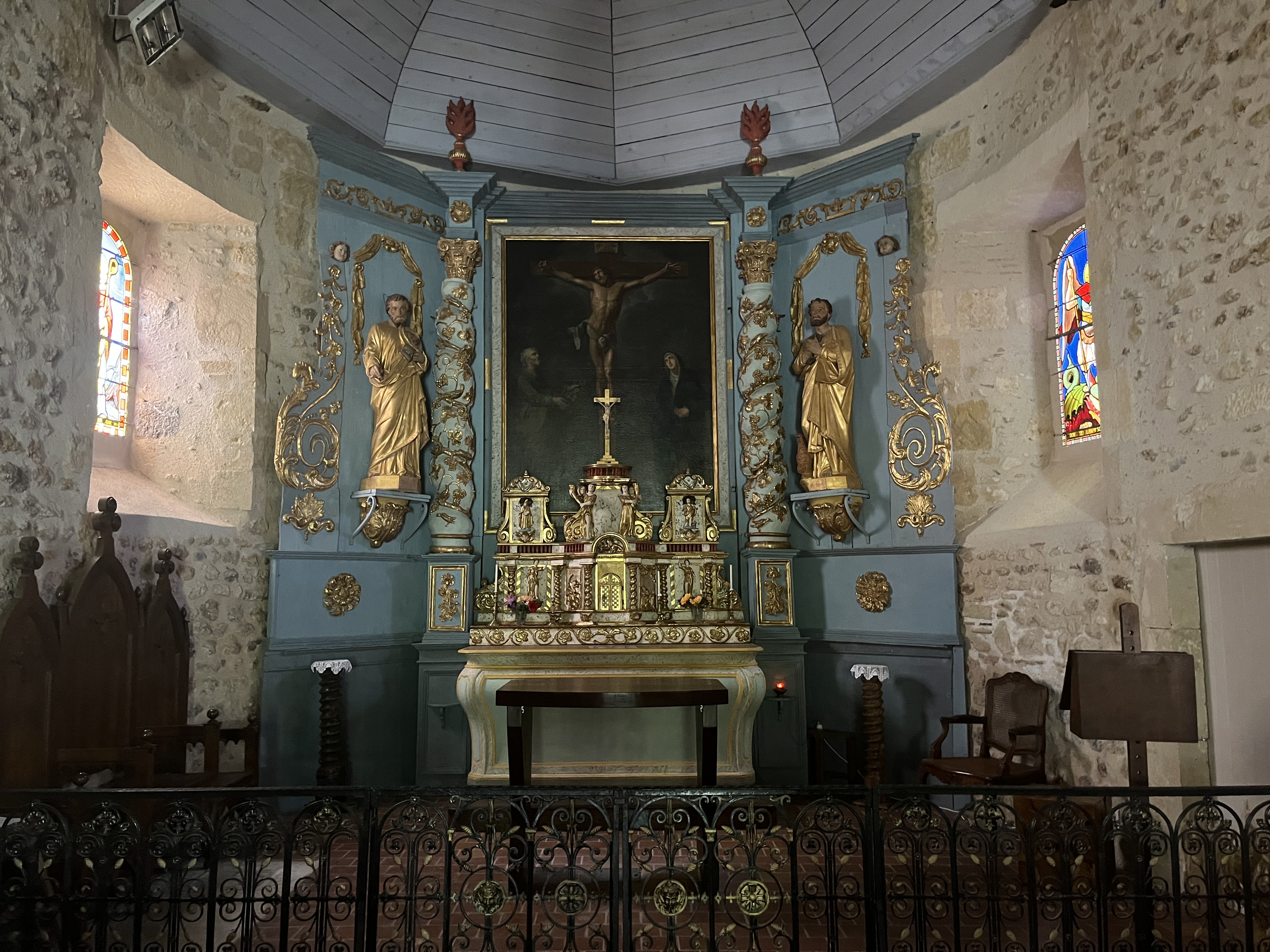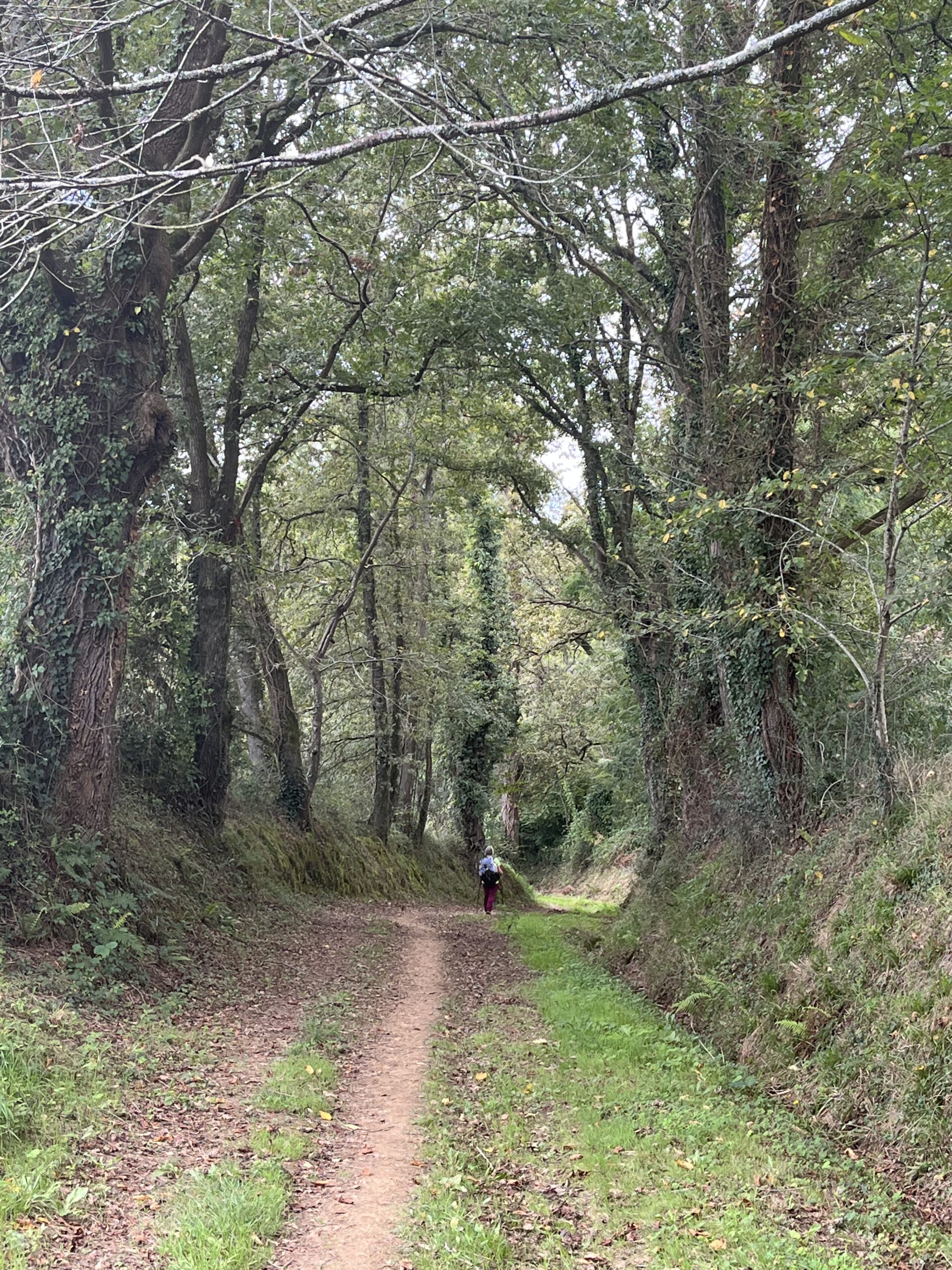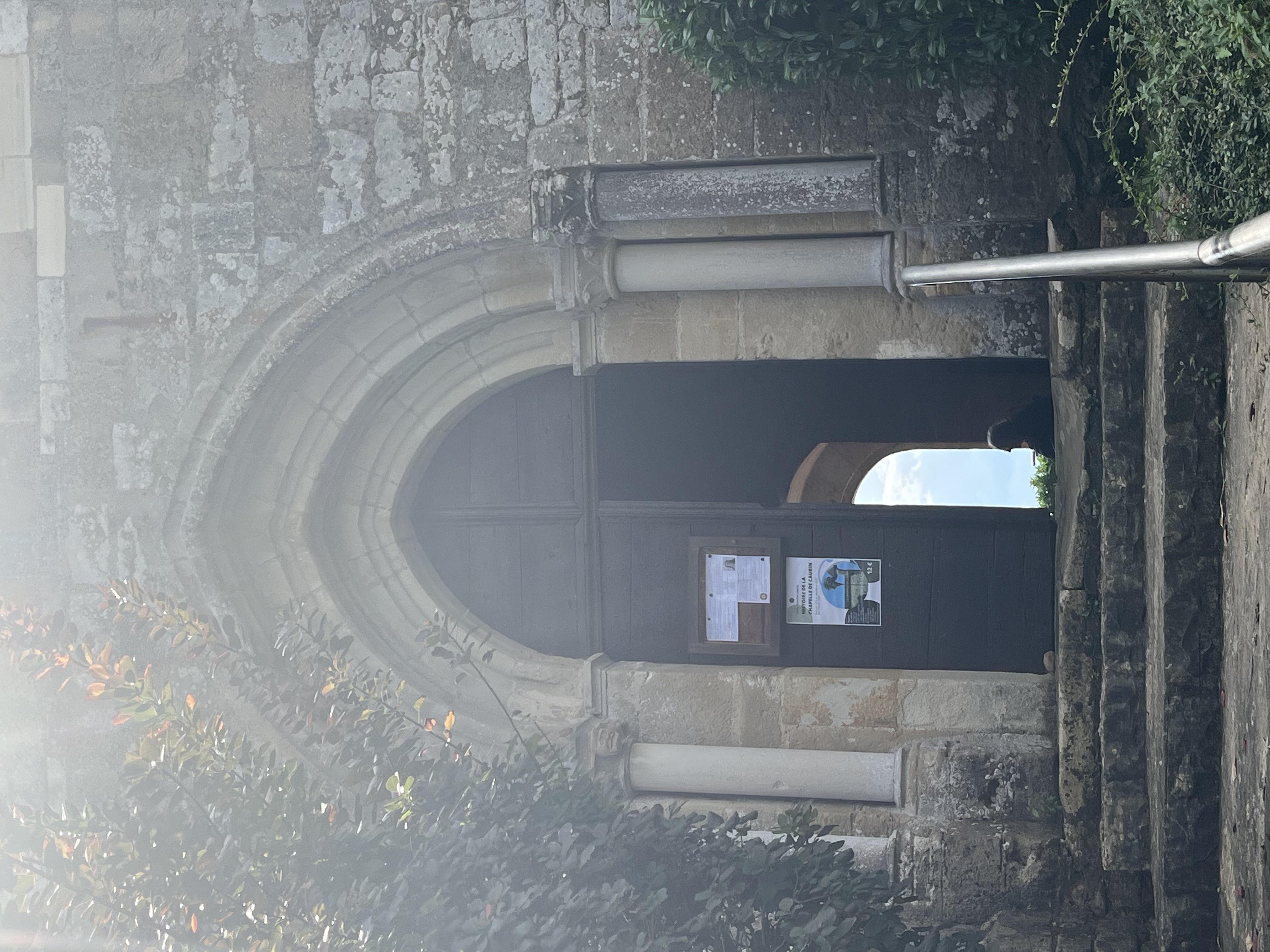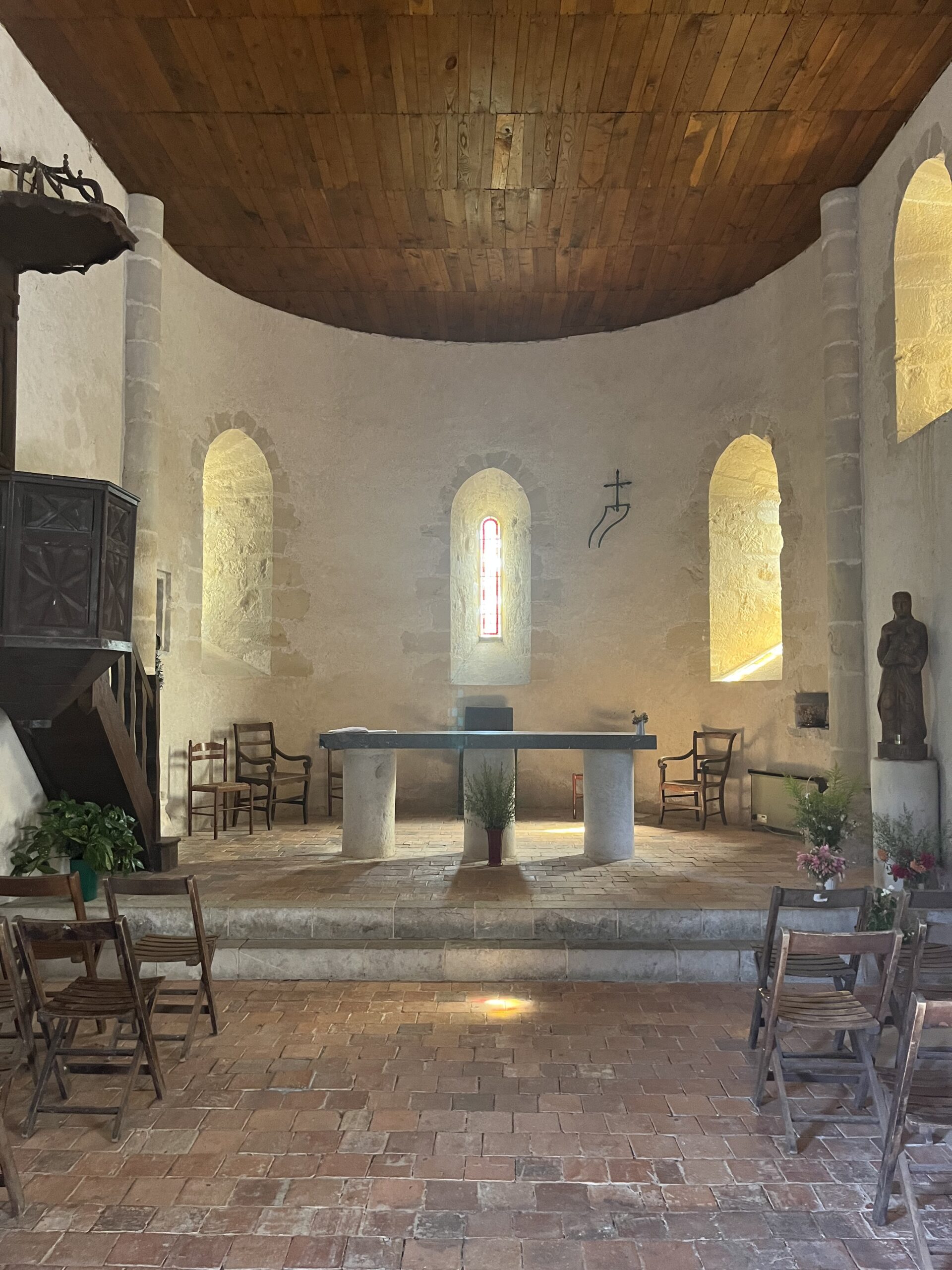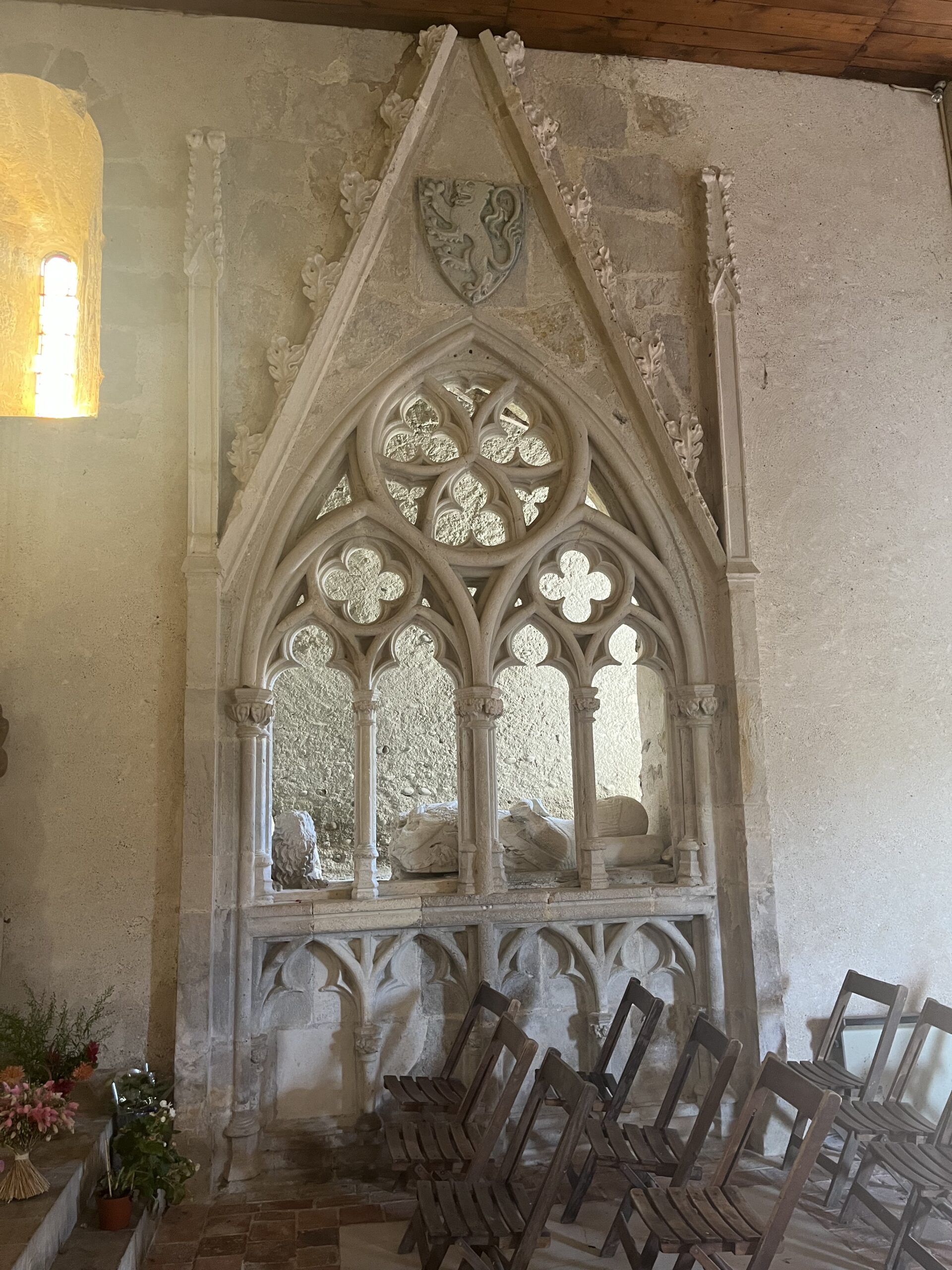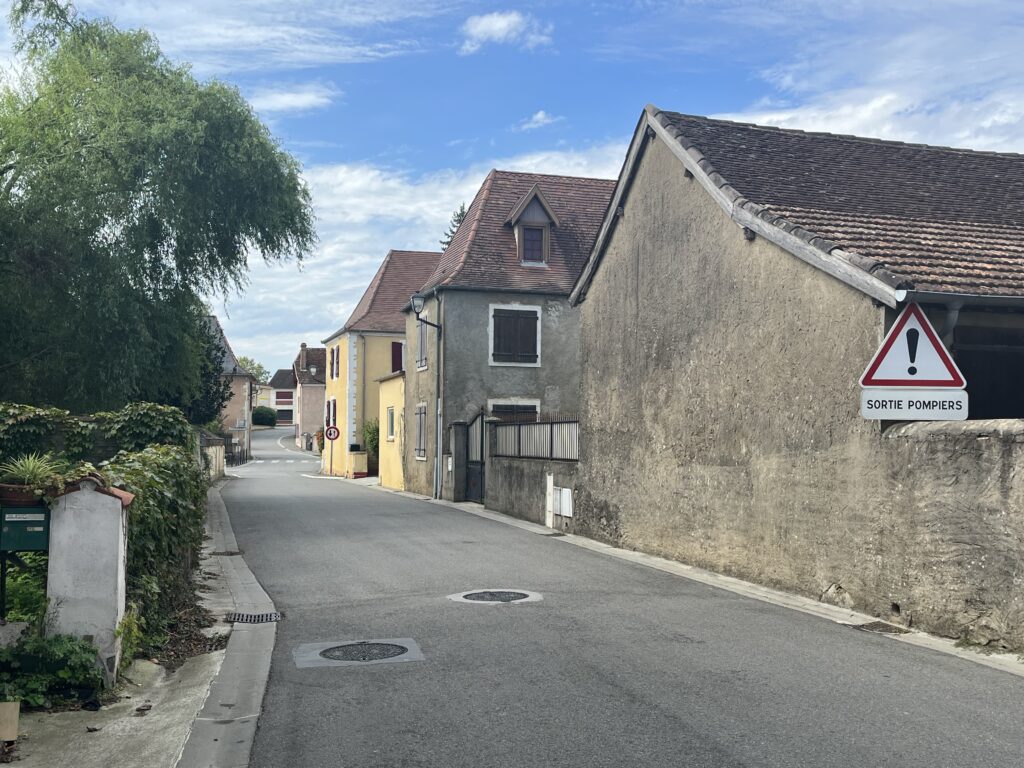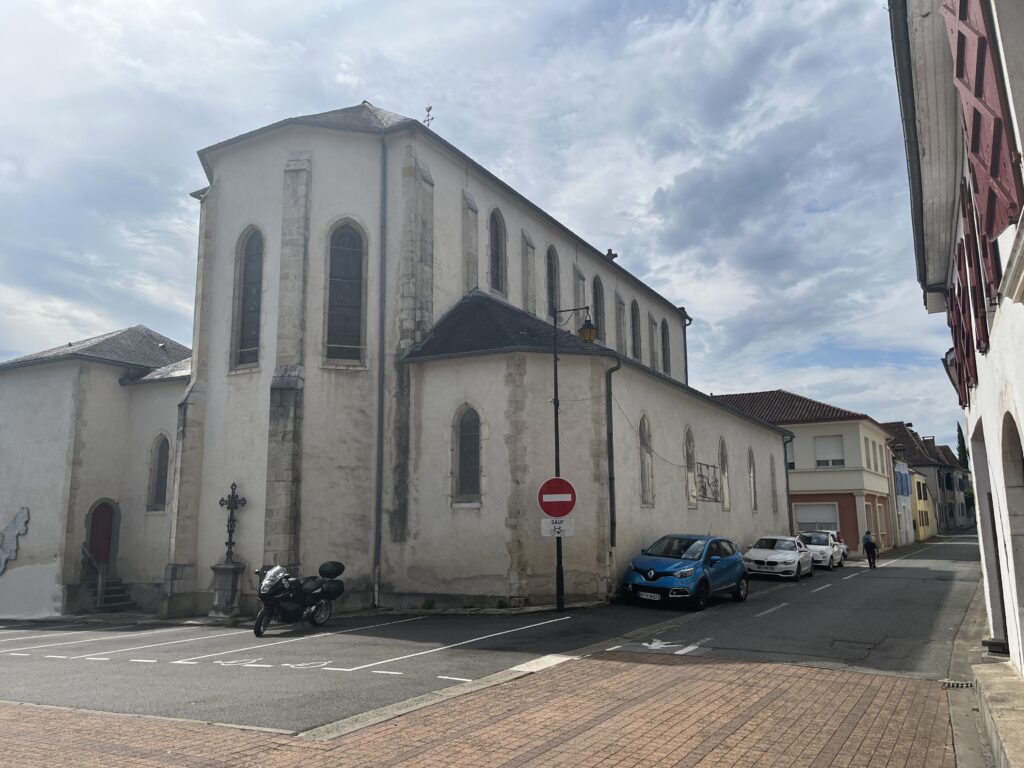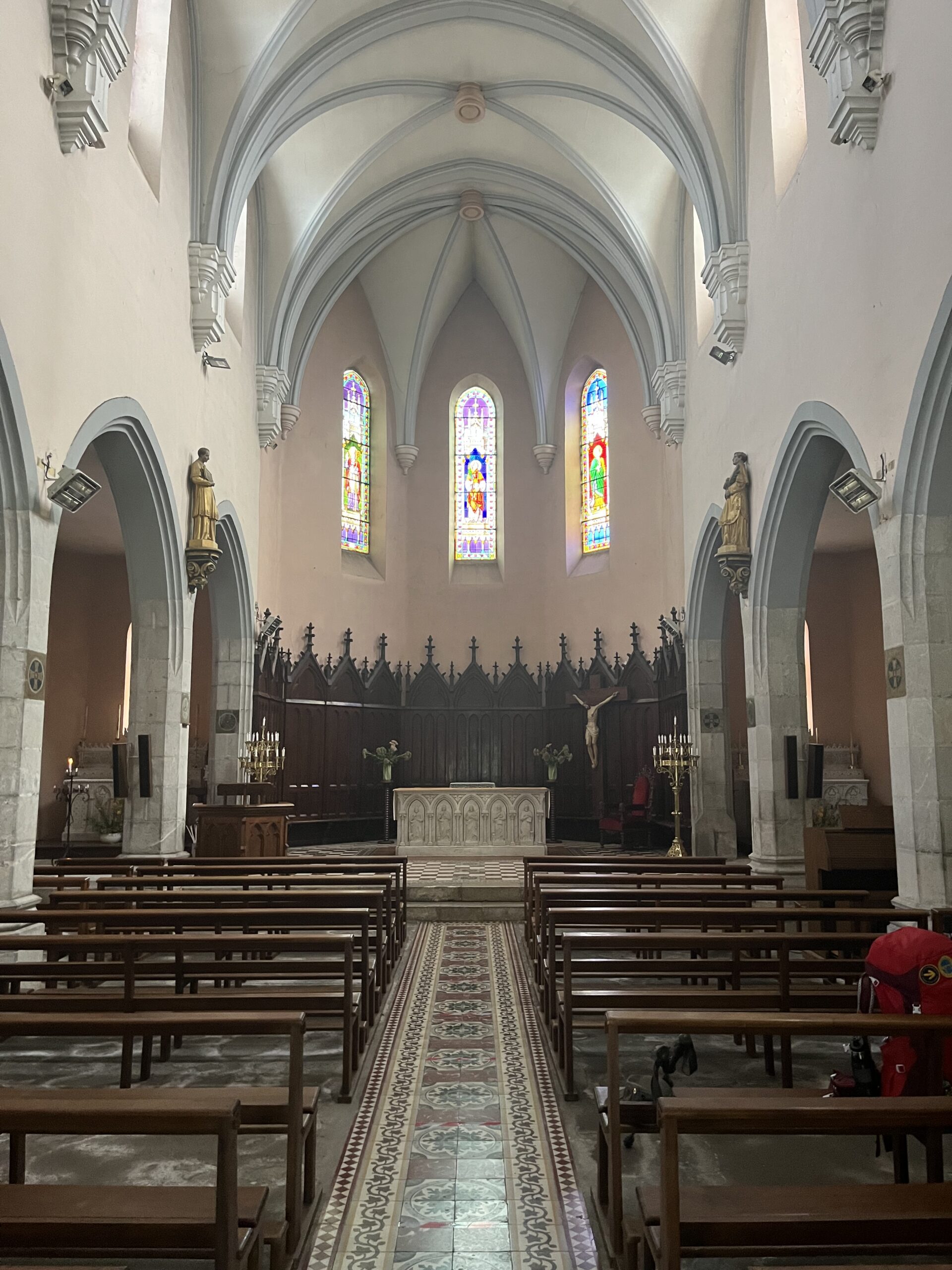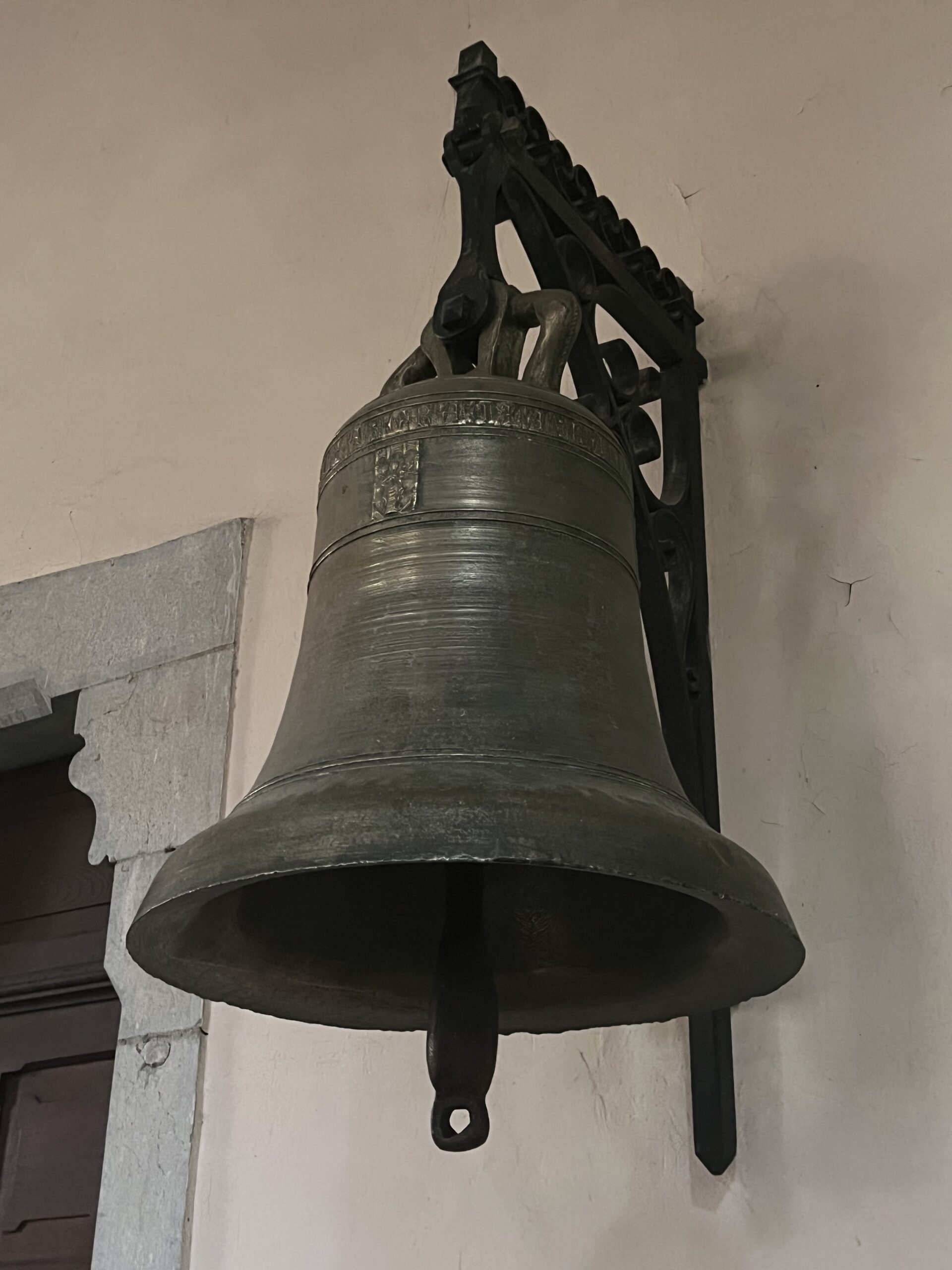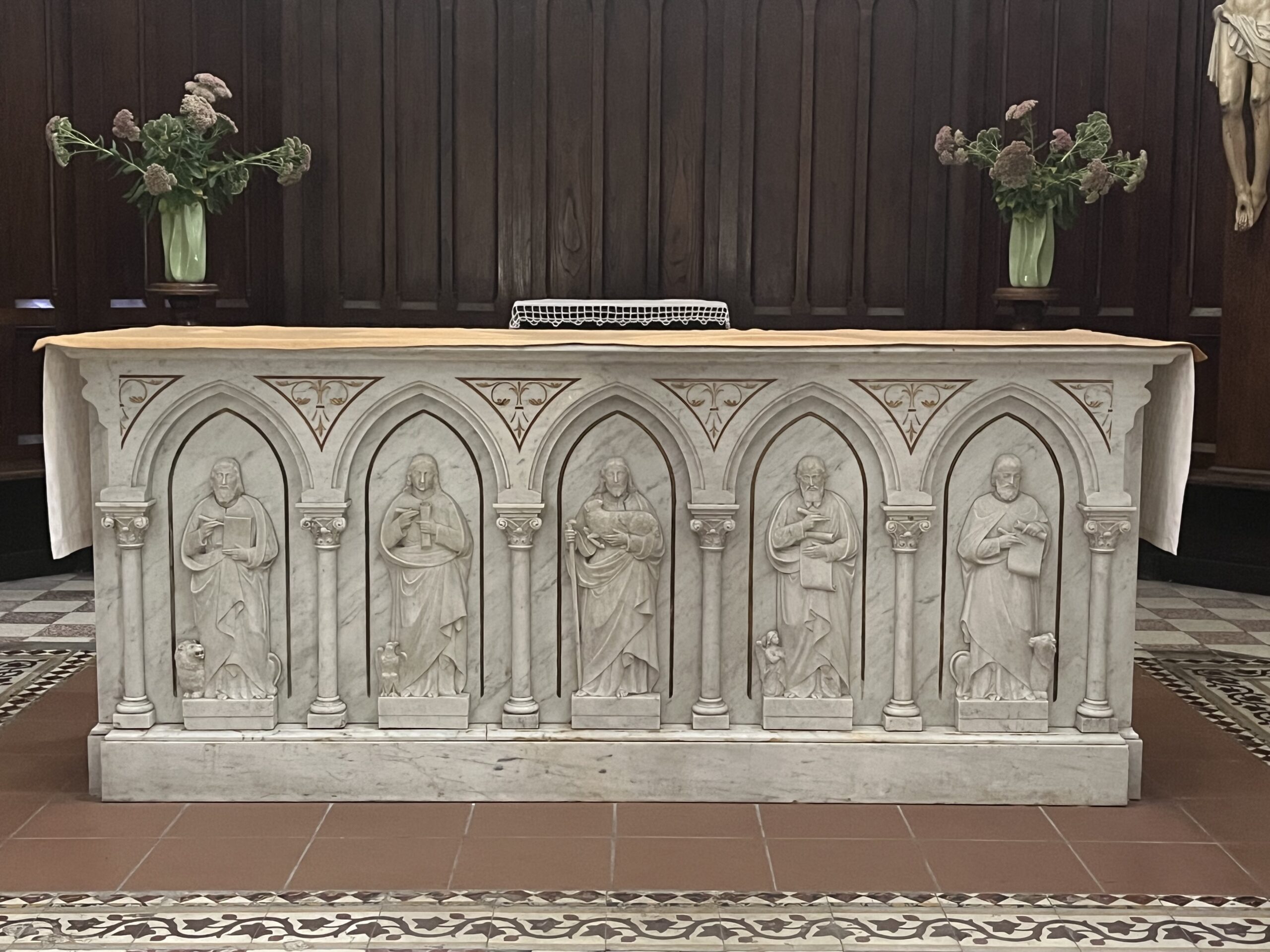Via Podiensis: On the (Asphalt) Road Again
Not only did last night’s gîte not have Wi-Fi – which isn’t super unusual – but they also didn’t have electrical outlets in the dorms. This means that I had to rechargew my phone using a battery pack. Again, not a problem – that’s why I brought the battery pack with me in the first place. I knew that there would be situation like this. But it does strike me as unusual, since at this point I have been walking in France for four weeks and this is the first time this is happened.
I was up out of bed relatively early. Finished my breakfast by six and was out the door by 6:10. Needless to say, it was dark. The signs to get out of town were a little difficult to find, but once discovered, they were relatively easy to follow.
They led me more or less immediately out into the countryside and for a couple of moments I turned off my flashlight and just looked at the stars. Sometimes I forget how bad light pollution is where I live, not to mention the constant overcast skies. To see a myriad of stars in the sky is a pleasure I don’t get very often.
Ursa Major was low in the sky, and it was easy to spot Polaris. I was walking west.
The Camino took me on a relatively flat gravel road that soon became a narrow dirt path around the north end of a lake that I could sense rather than see at first. If I covered up my flashlight, I could see the star light reflecting off the surface of the lake.
Any time I would stand still to try to get my bearings or to look for a marker, my flashlight would be surrounded by halo of tiny little moths and other insects.
I could hear ducks, or perhaps fish, splashing in the lake as I passed them.
By the time I got around to the other side of the lake, there was enough light in the sky even with my flashlight lit that I could see the surface of the lake. Somewhere far in the distance a rooster was crowing.
Eventually, the Camino turned away from the lake and headed into the woods. The trail was anything but smooth, and I made slow progress through the darkness.
I emerged from the woods onto more open ground. The trail here was actually more difficult to follow, though I could see the cornfield to my right and some sort of other field stretching away to my left.
When the Camino turned again, it was down an asphalt road. Like yesterday, I was now road walking through the easiest corn maze in the world. Unlike yesterday, it was pretty dark. I can’t see that it made a huge difference in the scenery.
Along the way, the Camino passed through a number of tiny little villages, and at some point the corn fields disappeared entirely, to be replaced by wide open countryside and a large valley on my right. It was still difficult to see anything of the scenery, but I’m pretty sure there was some pastureland involved. I could hear cowbells and the occasional disgruntled mooing. The road became gravel, then dirt, then stone in turn.
Somewhere behind me, the sun rose. I turned off my flashlight. It was about 7:15 AM.
The Camino crossed over a river on a modern bridge and became asphalt once more. I passed by an old mill – Moulin de Louvigny – which looks like it has been made into a proper country home. There are a little canals, some no more than two meters wide, running all over the area. Presumably these were part of a network of channels dug from the river to help work the mill.
Much of the morning was spent in roadwalking past villages too small to have a church or shop.
The exception was the tiny little village of Louvigny, just after the mill. They had a little church of modern construction there with some unusual stained glass windows. I prayed for the intentions of the Camino and moved on into the cornfields on a dirt trail before eventually returning to the road again.
At one point, after a long looping climb up a hill, I again caught sight of the Pyrenees. They loom much larger on the horizon now.
The Camino, now gravel and stone, descended from the hill through a pine forest. The landscape is definitely getting hillier now as I approach the mountains, with more and more large stretches of Woodlands.
Lots of hilly ups and downs this morning.
By 9 AM, I was once more roadwalking.
I stopped to pray in the modest little Parish Church in the village of Fichous-Riumayou. The interior furnishings, including the most colorful looking presider’s chair I have ever seen, leads me to believe that this was once a much grander church than it is now.
The terrain remained hilly woods and fields, sometimes with small farming plots.
I entered the relatively major village of Larreule at about 9:30. Based on the information in my guide books, I was hoping for a café for second breakfast.
But first I made my visit to the Church of Saint Pierre. This 11th century parish church is all that’s left of the once-important Benedictine Abbey of Saint-Orens (10th – 18th c). In fact, the name of the town references the Holy Rule (in Gascon). You can still dimly make out the cross of Saint Benedict above the doors to the church.
The remaining church is extremely unusual, in that it appears to have two main sanctuaries at right angles to each other. When you walk in the doors, there is an altar directly in front of you, a moderately grander altar to your left (which for the sake of clarity I will call the main one), and an elevated choir with choir stalls to your right.
Given the existence of an additional alcove immediately to the right of the main altar and in line with the secondary altar, I suspect that there were originally additional side chapels, of which only one remains. The basic structure of the original building seems to have been solidly Romanesque, although the altars look as though they belong to the 17th century. There are a couple of very damaged but still fine Romanesque capitals.
There are several odd niches in the walls throughout the building that may have been doors at one point, including one on the level of the choir loft, but not actually in it.
It is a fascinating place, and I would love to know what it looked like when it was still functioning as an abbey church. I’d also be interested in learning if there’s been any serious archaeology done around the site.
I prayed for the intentions of the Camino, and continued on into the town. I saw several pilgrims, both at the church and in the town. These were the first I’d seen since leaving this morning.
By the way, the guide books are mistaken. There is no café in the town at all. There is, however, a vending machine where I was able to procure an Orangina and eat second breakfast out of my stash.
And then it was back to roadwalking, the theme of the day, through cornfields and cow pastures. At least it was flat! well, mostly.
I reached the village of Uzan at about 10:50 AM and stopped in to pray at the parish church. Nothing fancy, quite serviceable, and obviously well cared for. Based on the symbols on the side altars, however, it would appear that they’ve been changed at some point. There are Eucharistic symbols on the side altar with a statue of Virgin and Child, whereas a side altar with the statue of Saint Joseph has a Marian monogram upon it. This particular altar is stone, unlike the others in the building, which are wood.
The various statues in the church, all white and unpainted, includes one of Sainte Quitterie. It was only as I was leaving and saw a flyer pinned to the door that I realized that the church was dedicated to her.
I was more than halfway through my day, with 14 km to go. Most of the day has been roadwalking, and my feet were pretty sore.
After a while, the road descended into a valley filled with trees and flowers. It was just delightful. Eventually, of course, the Camino returned to the usual rotation of villages and agricultural fields.
Along the way, I stopped to pray in the little parish church in Géus d’Arzacq, which has the year 1709 above each of its doors. There’s not much to it, not even a crucifix. If it weren’t for the tabernacle, the beautiful and solid Gothic altar, and the plaster statue of the Virgin, it might have been a Quaker meeting hall.
The village had a lovely, soft gravel sidewalk for a bit, which my feet very much appreciated. A lot of the construction in the village appears to be relatively new, and a large percentage of it falls under the category of “McMansion”.
Immediately after leaving the village, the road was gravel and grass, eventually becoming a dirt track. I’d gotten quite tired of the asphalt by now. The turf definitely put a bit of a spring into my step.
Sadly, when I arrived in the wealthy little village of Pomps just before noon, it was back to roadwalking. The village is filled with large stately homes, and the yards all have giant iron gates. For a brief stretch, they also provided a gravel sidewalk area.
I stopped for a quick snack and then continued. I fell in walking with a Pilgrim from Argentina, and we talked about farming as we walked through the cornfields.
I stopped to pray inside the church of Saint Pierre in the village of Castillon. After the litany of stripped down churches the past few days, this one was quite a surprise. Both the main altar and side altar are baroque wonderlands. In particular the painting of the crucifixion above the high altar is quite moving.
The furnishings are substantial, made of wood and with a dark finish, a style complementary to the fabric of the church. The only thing that seemed a little out of place was the main altar. Although constructed in the same sort of dark elegant wood, it lacked something of the finesse of the other pieces.
Although there was plenty more roadwalking, there was also a beautiful jaunt down a dirt path through the woods.
Just after 2 PM, I stopped to pray at the Chapelle de Caubin, a restored 12th century chapel on the site of a Knights Hospitaller commandery. Among its odder features is a large bit of Gothic stonework, most probably originally a window. Absolutely beautiful, but strangely out of place.
With renewed energy, I finished the last 2 km of road walking into town. uphill, of course!
Arthez-de-Béarn is this one of those long, stringbean sort of villages that primarily exist off of one main road. Many of the buildings are quite charming and have a distinctive swept angle to their high peak roofs.
I made my way to the church to make my customary prayers. This church is certainly interesting. Clearly the parish has some money, because instead of the usual wooden walls and doors that I’ve seen fitted to the Romanesque and Gothic exterior arches all throughout France, here we have glass and steel.
Tiny little gîte: three beds, of which only two are occupied.
Date: 15 September 2023
Place: Arthez-de-Béarn
Today started: Arzacq-Arraziguet
Today’s Photos!
